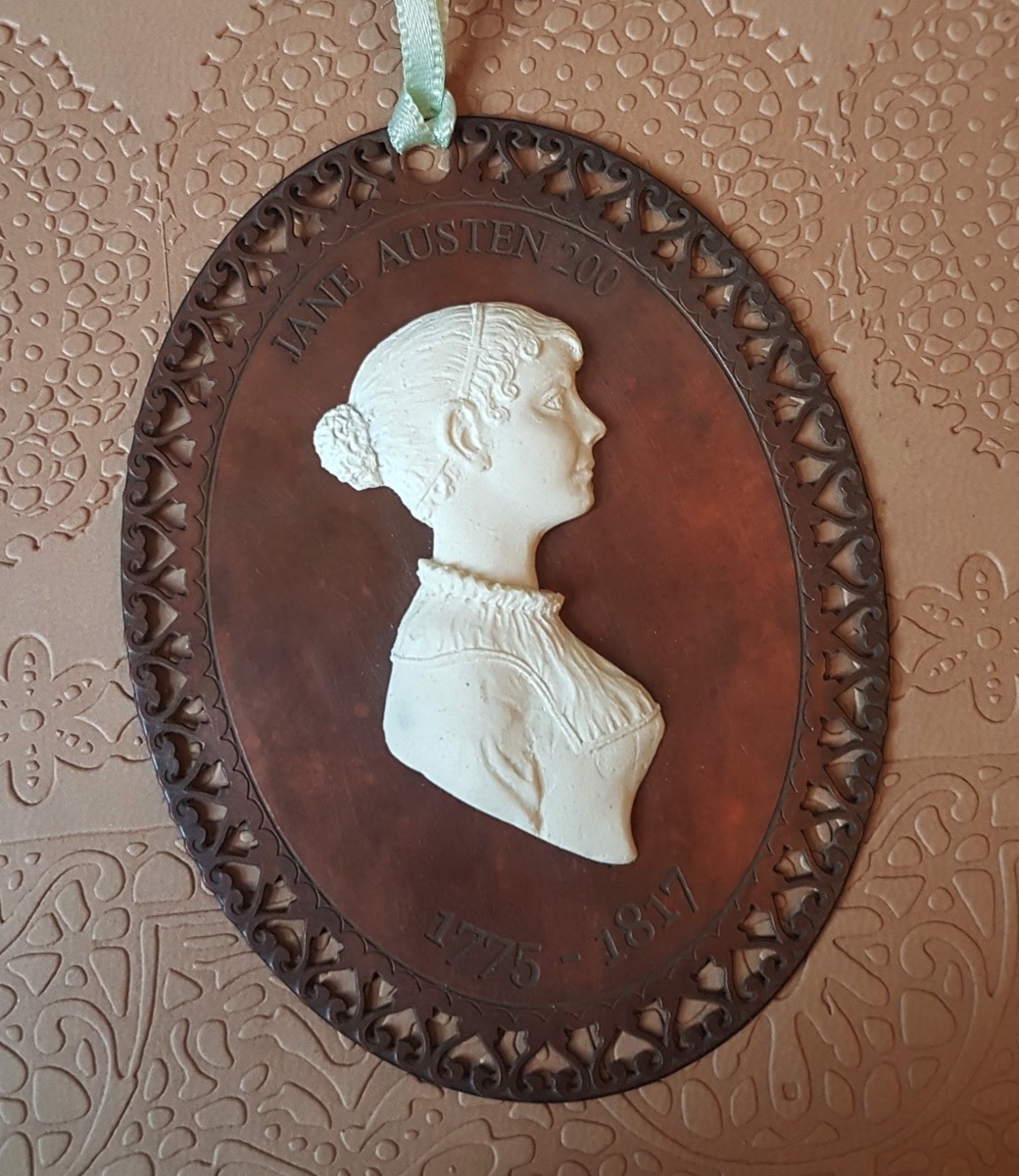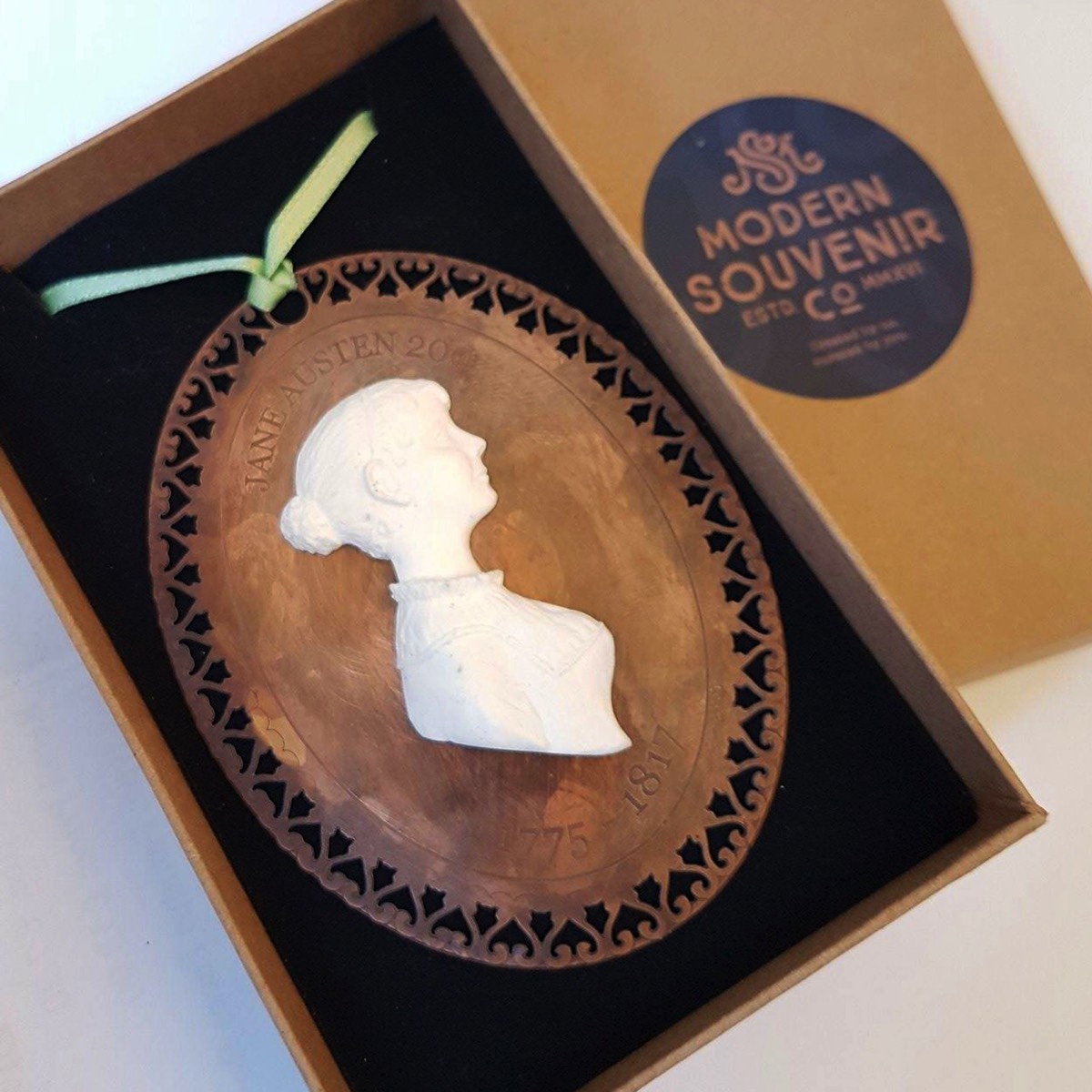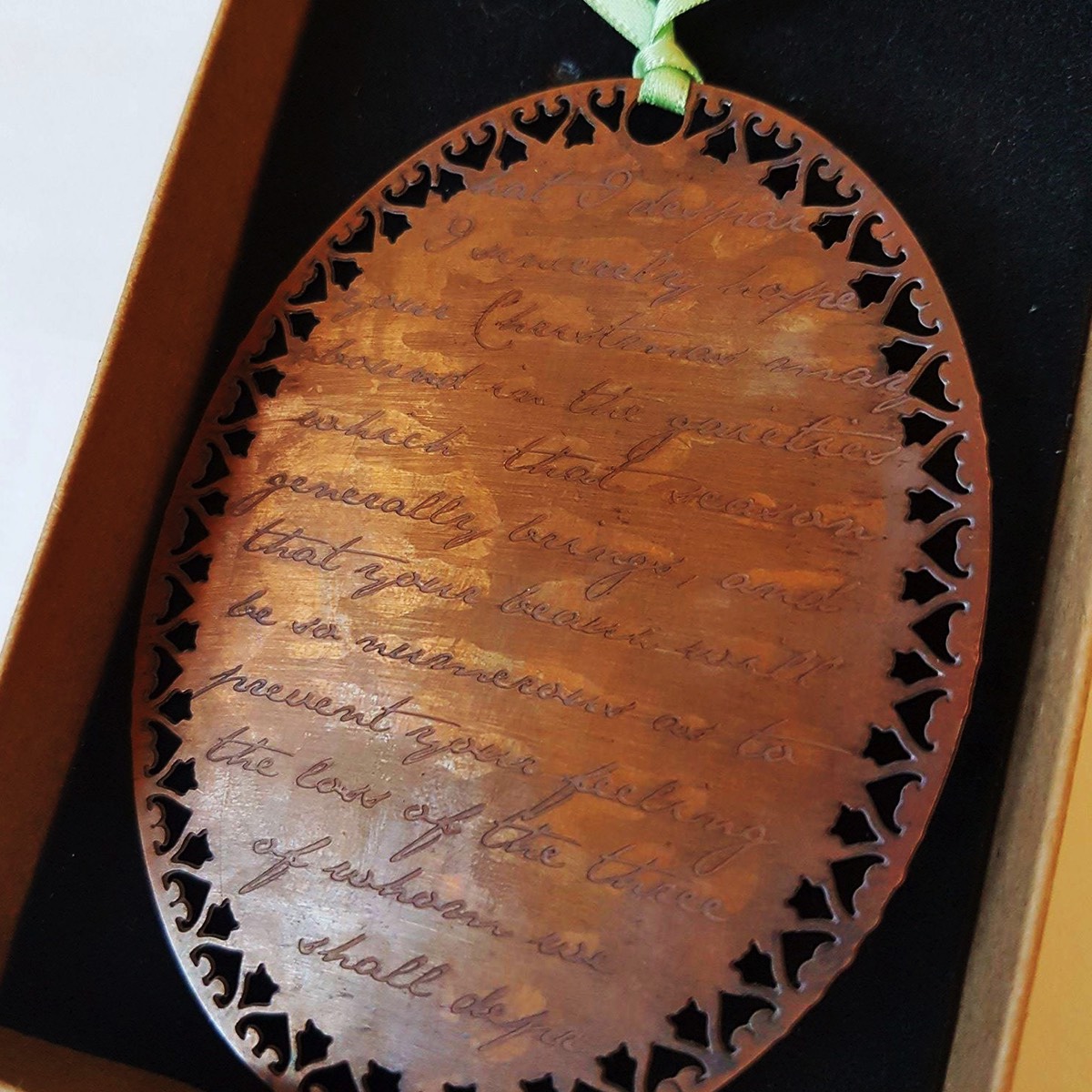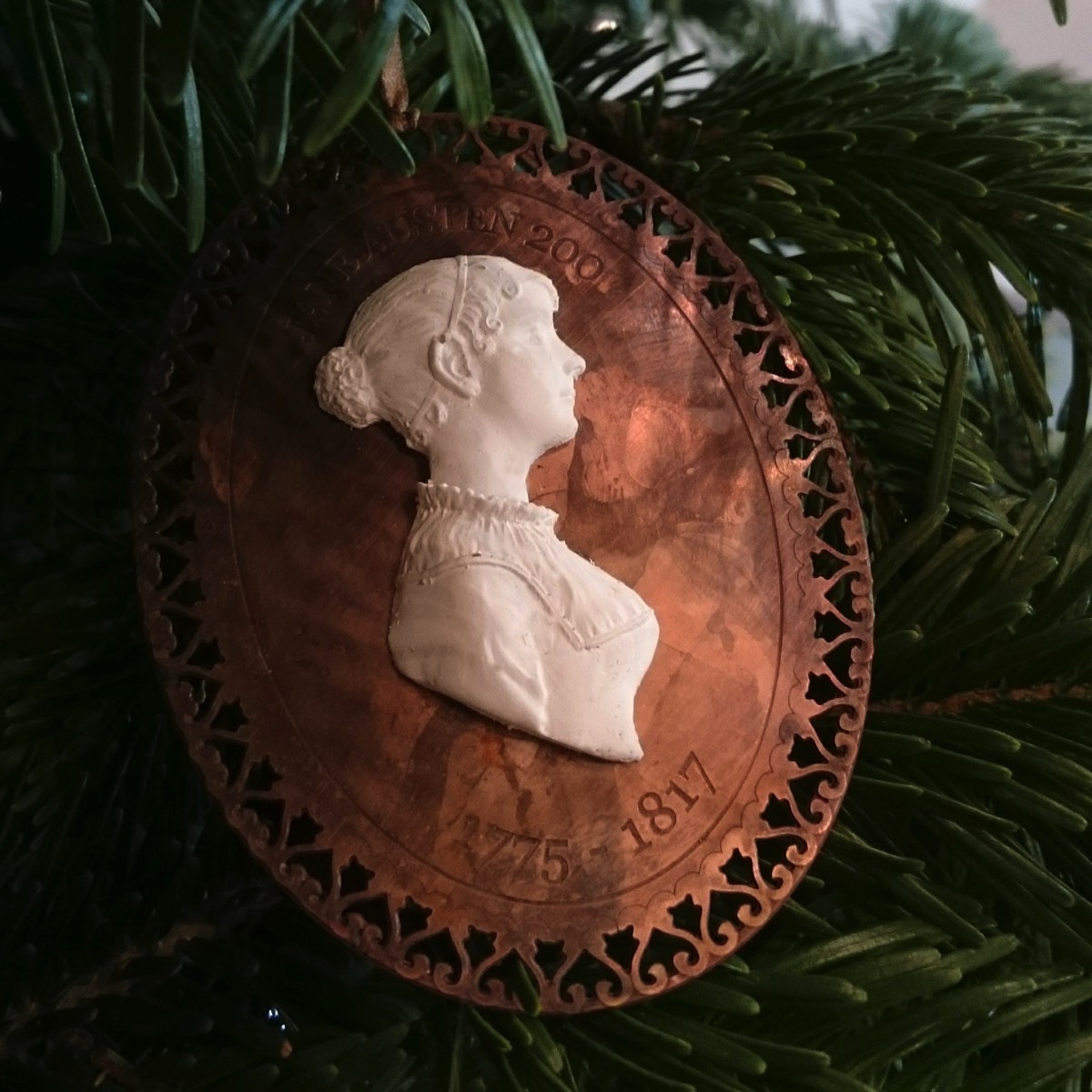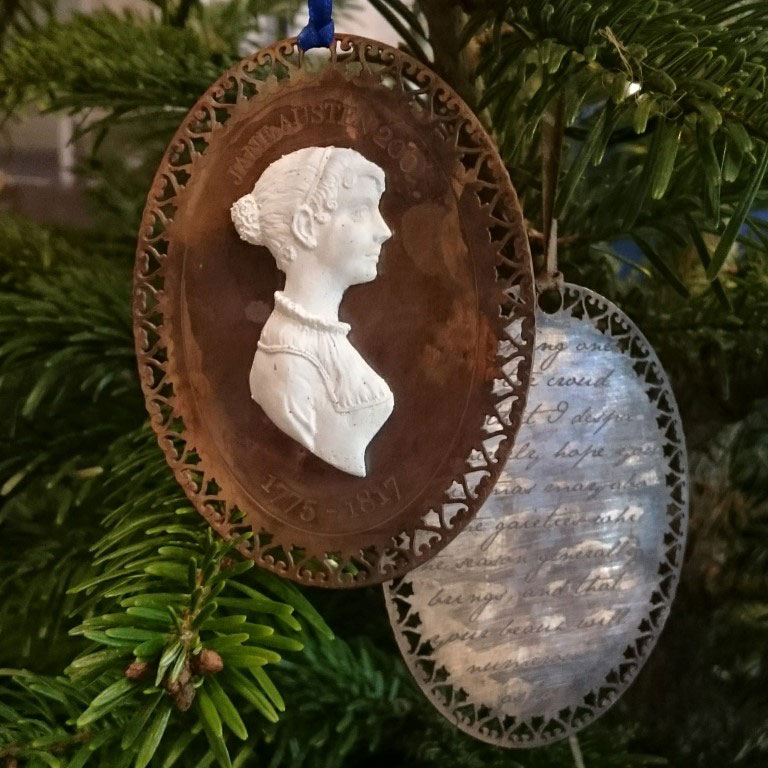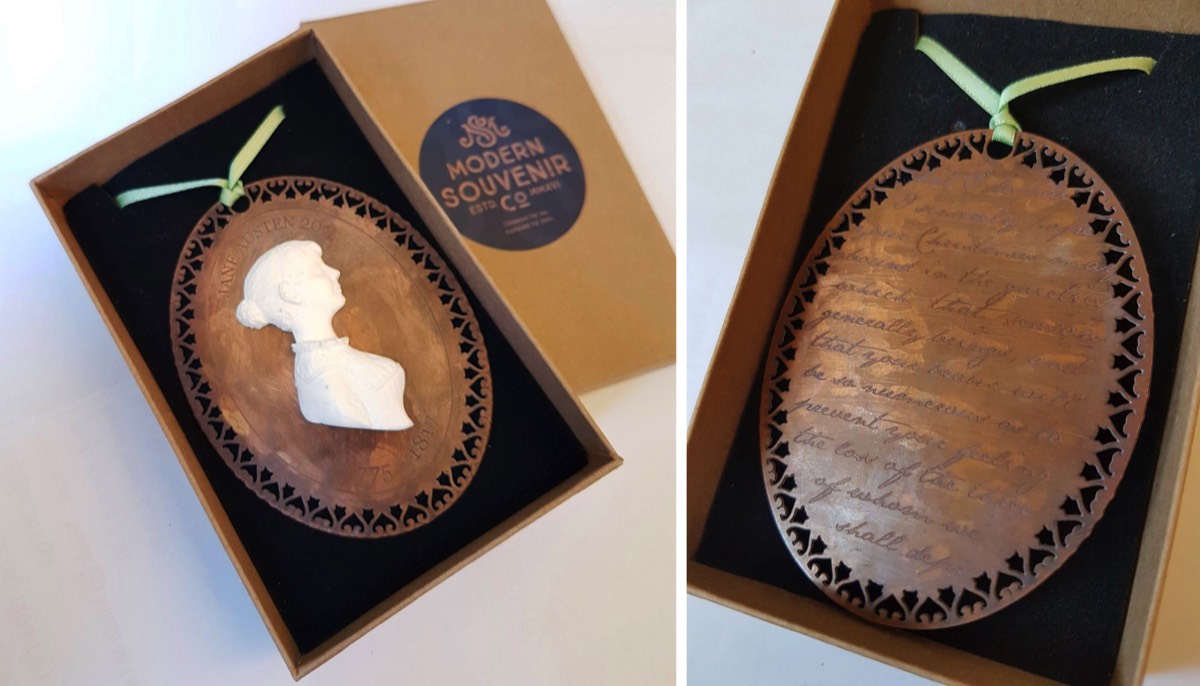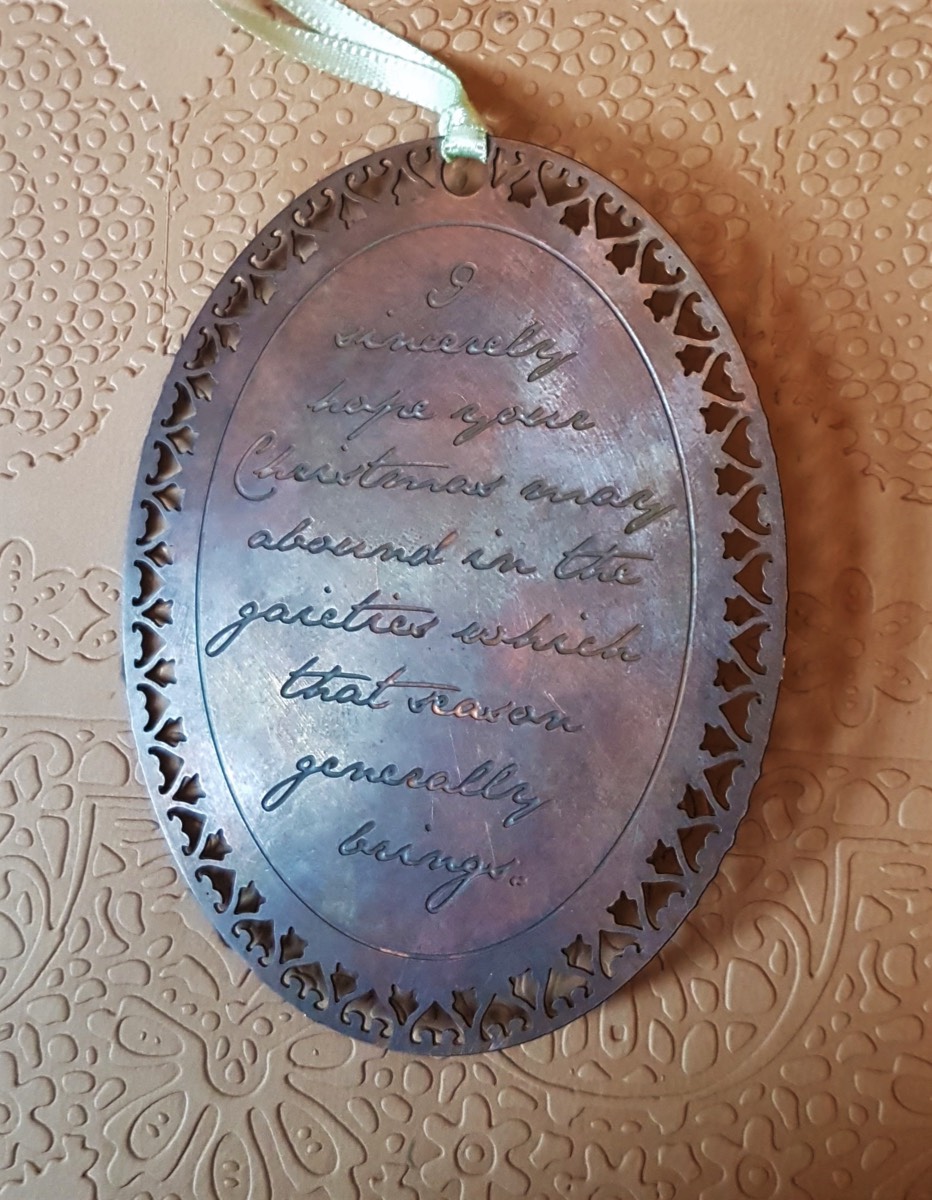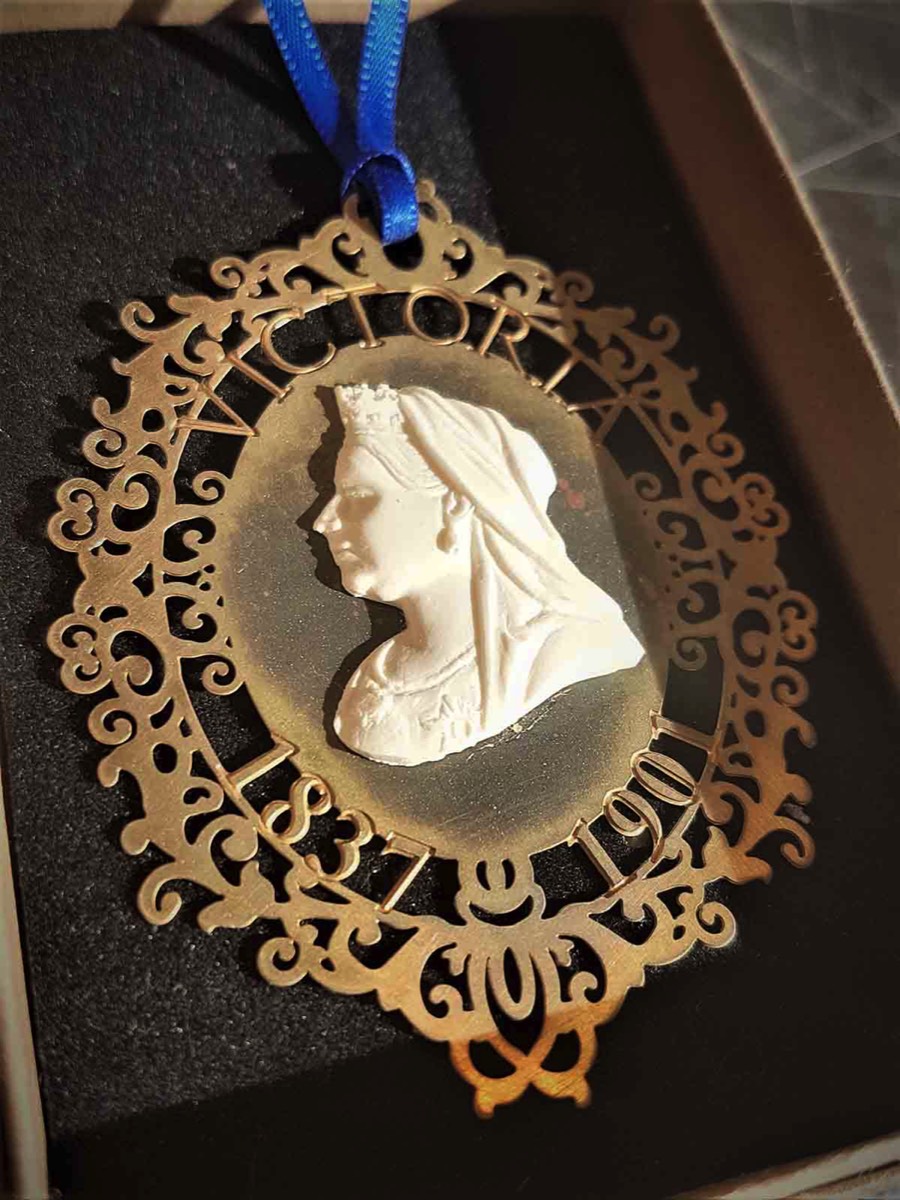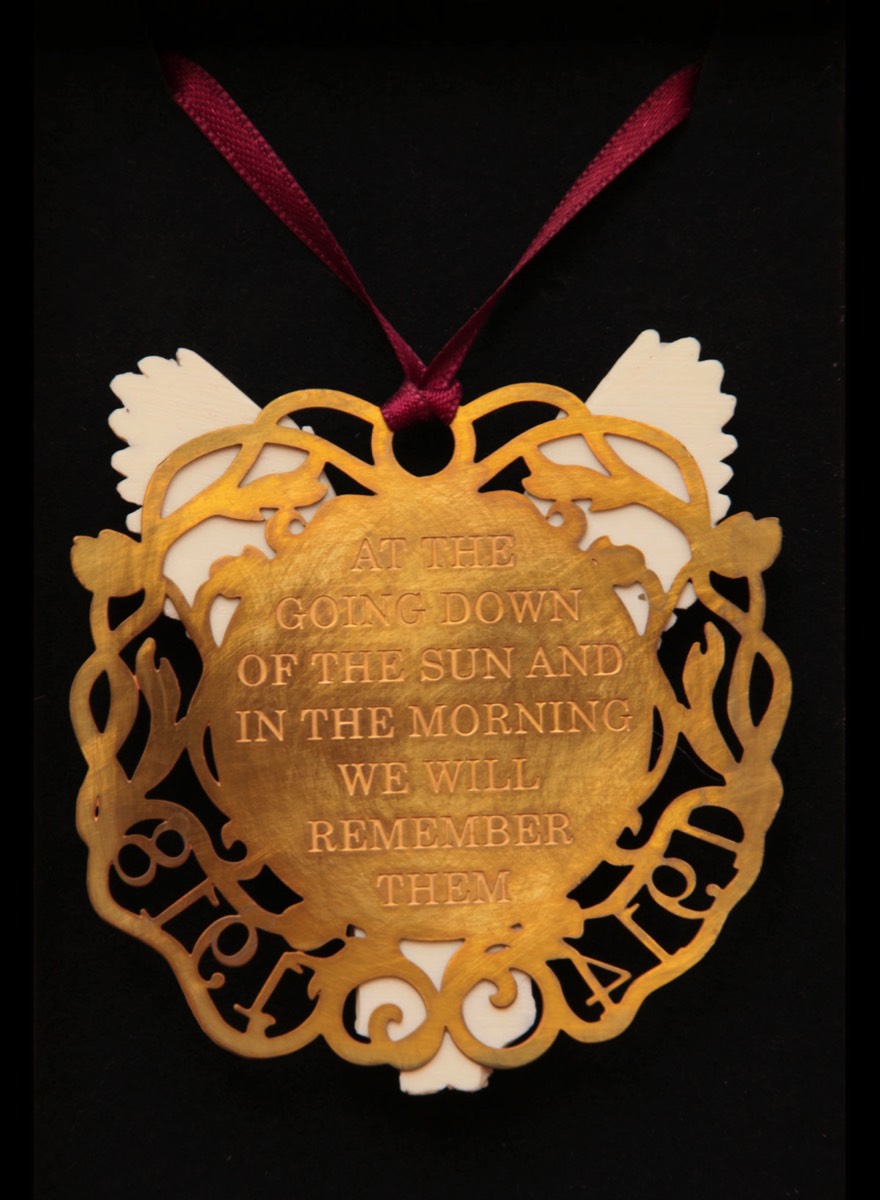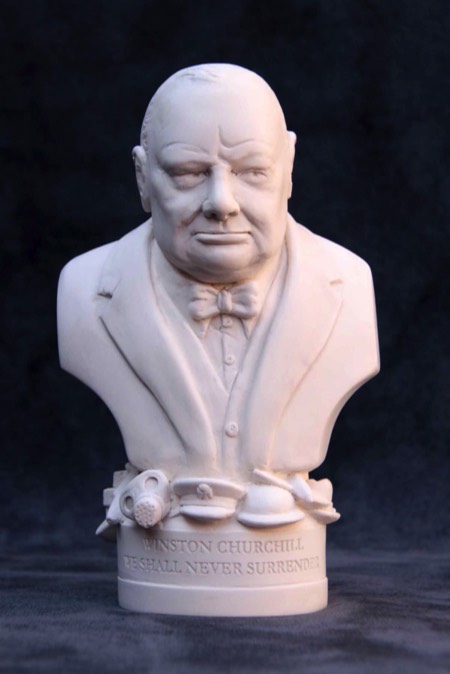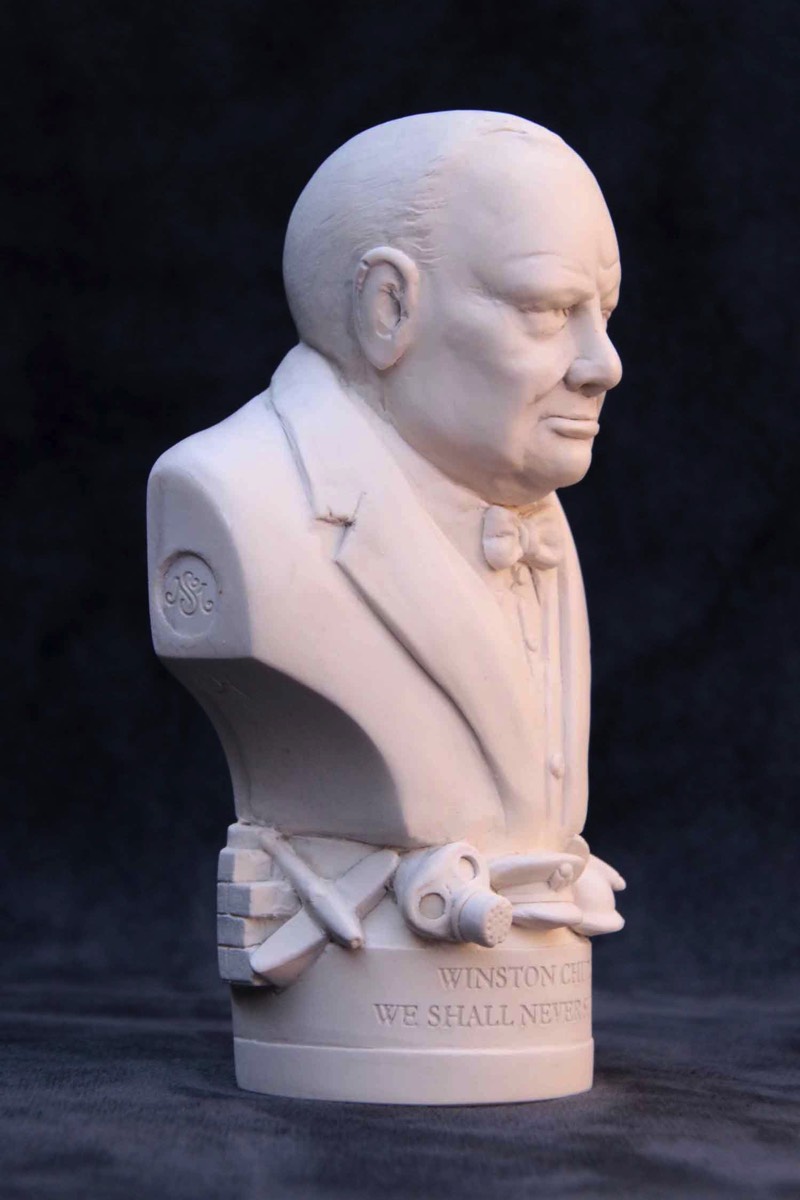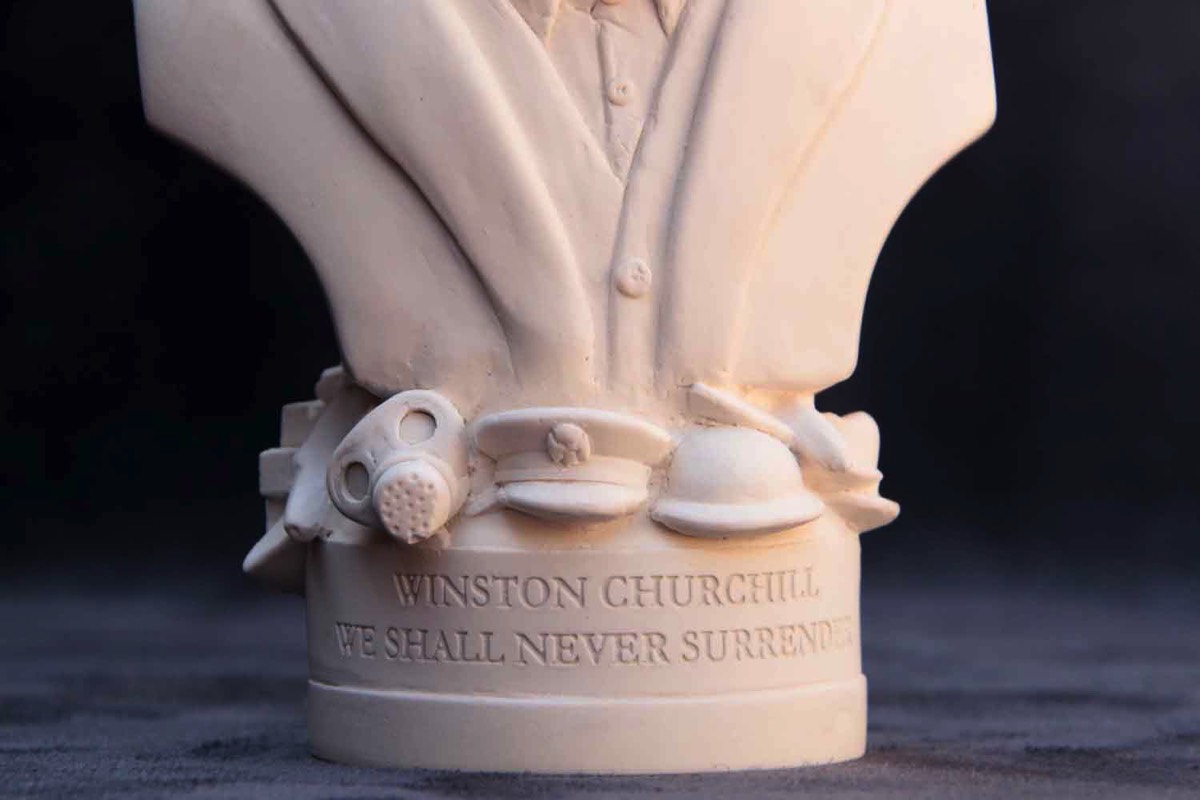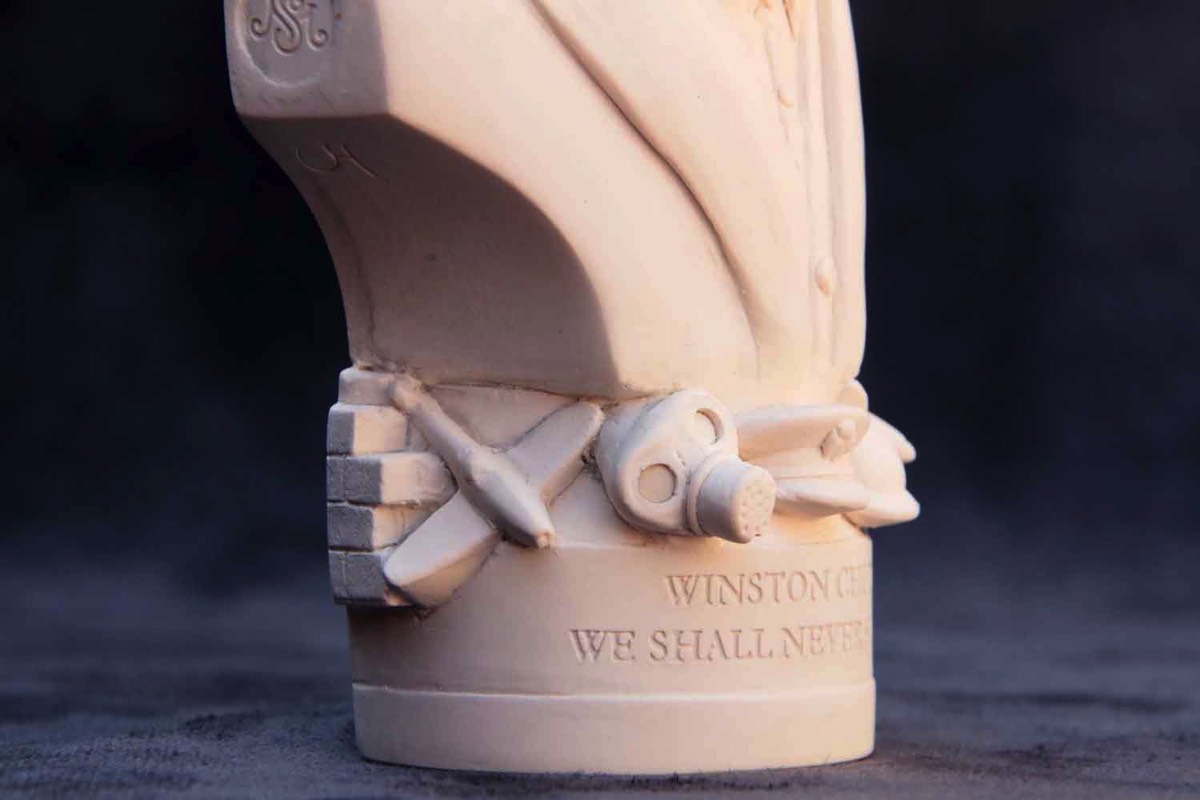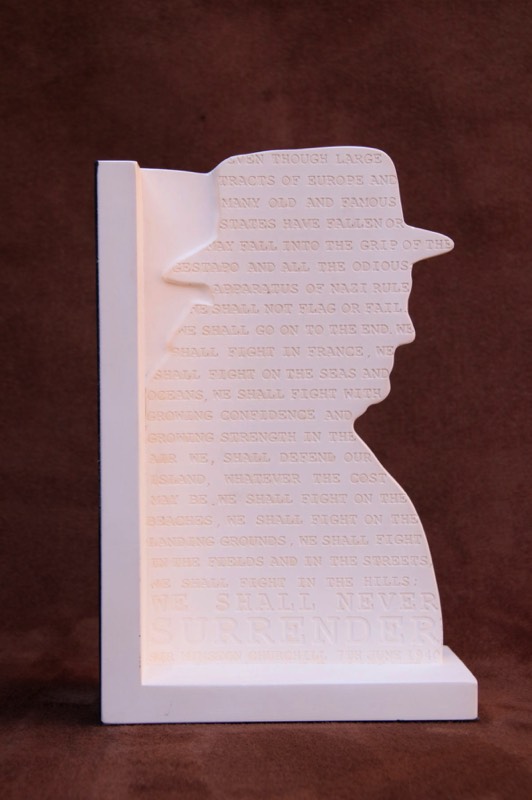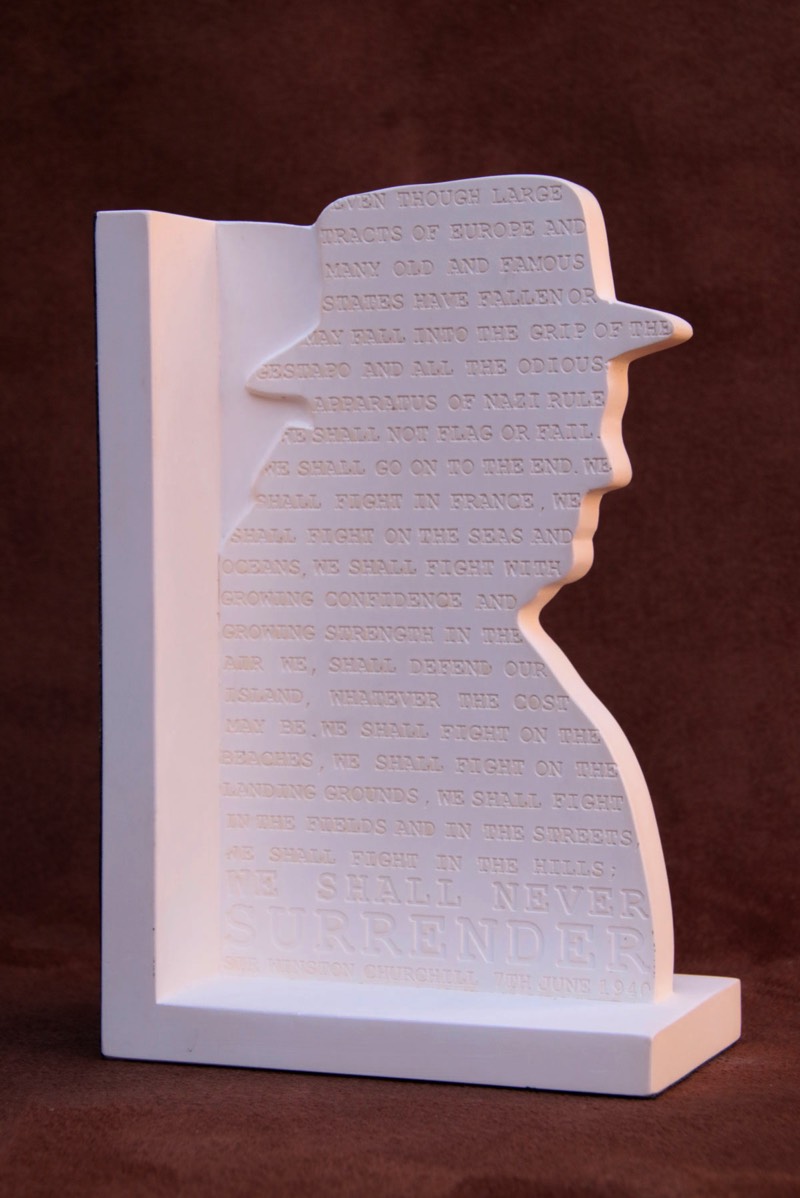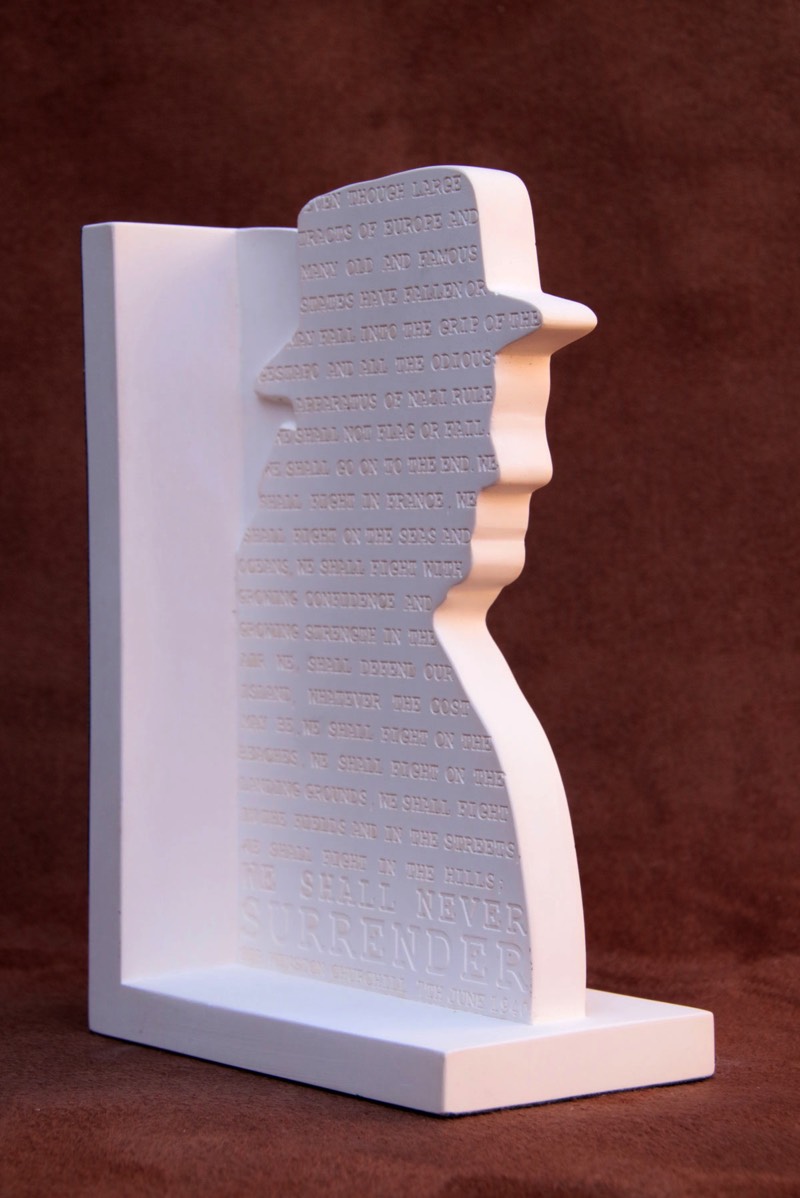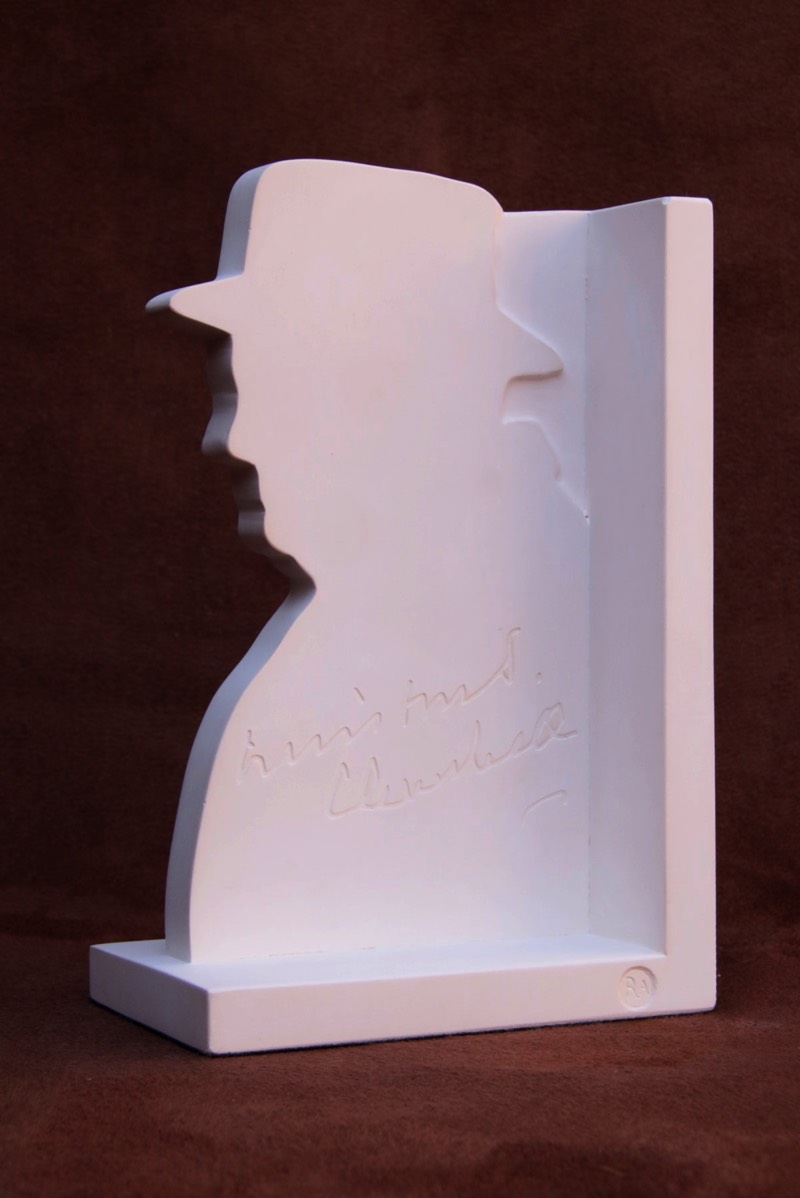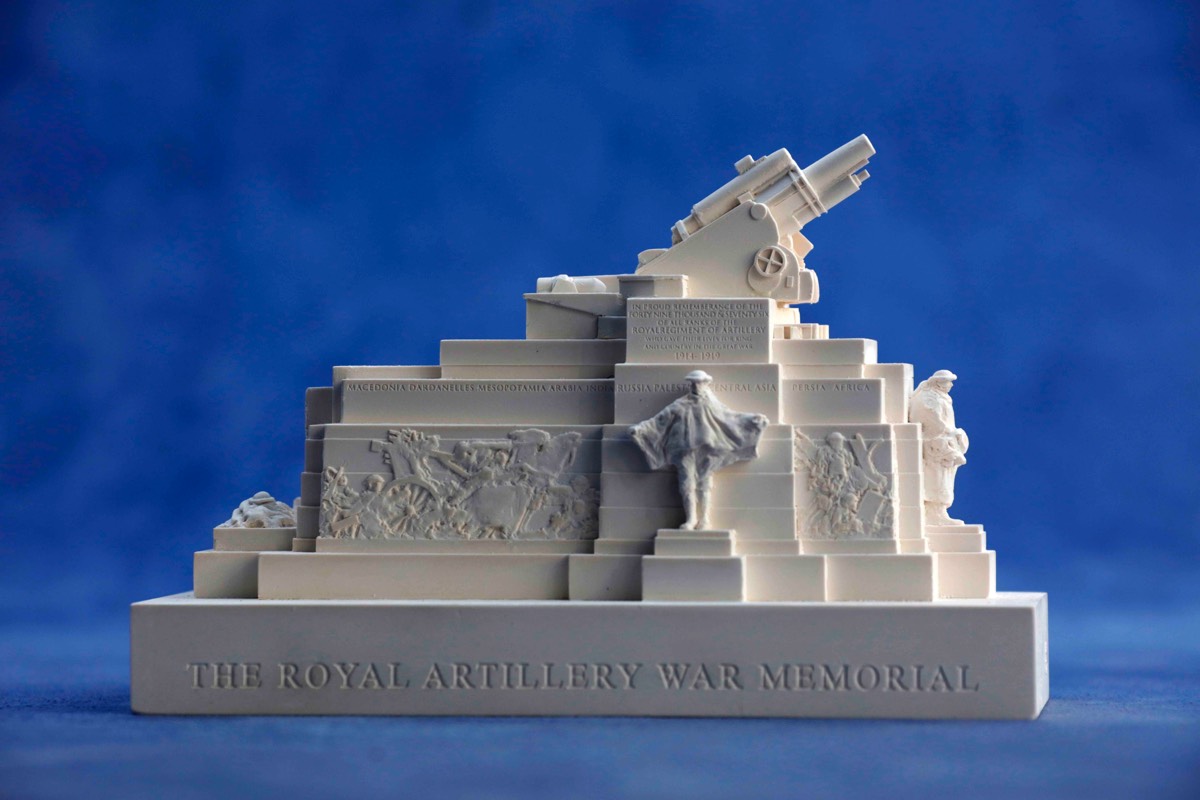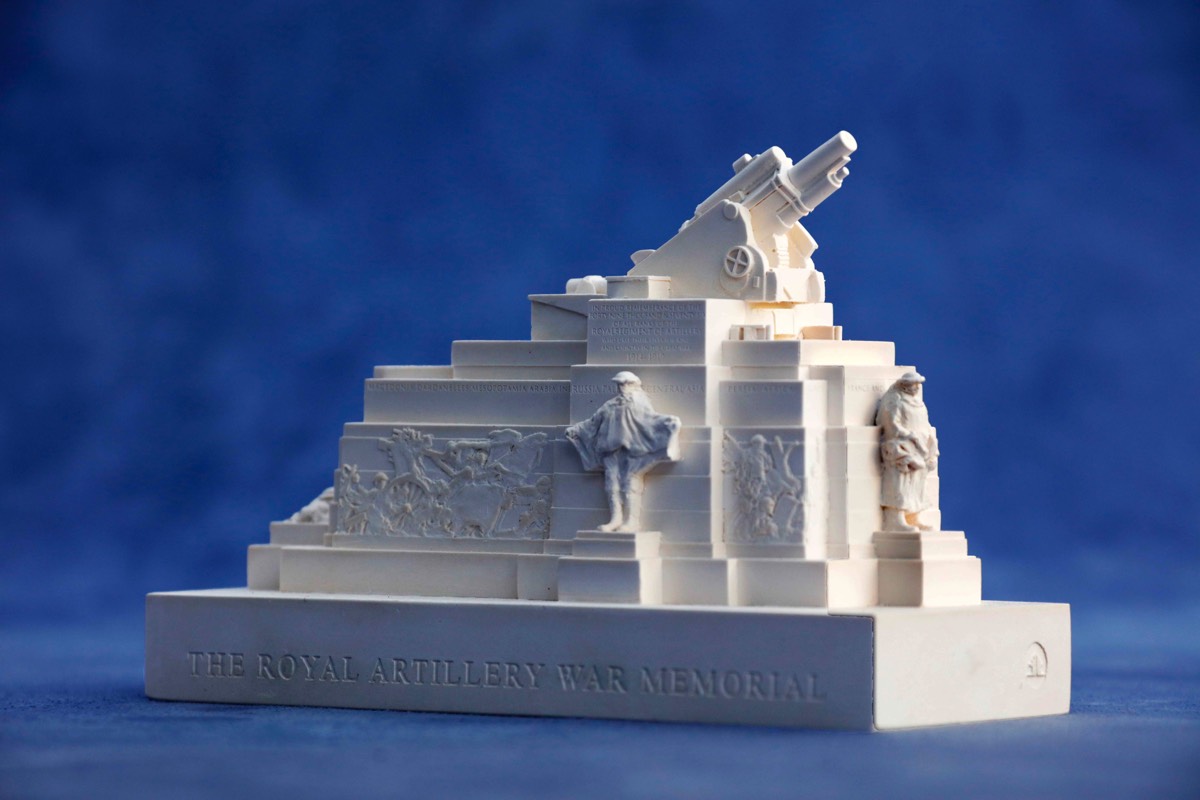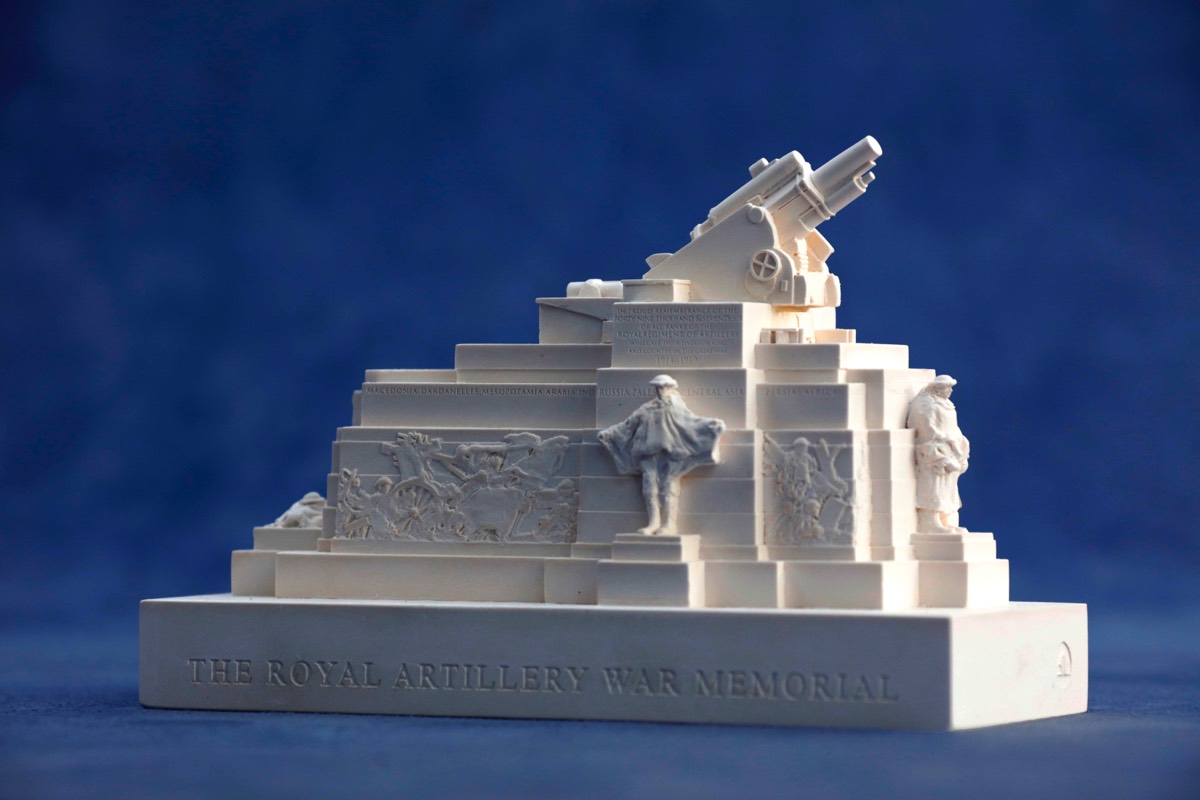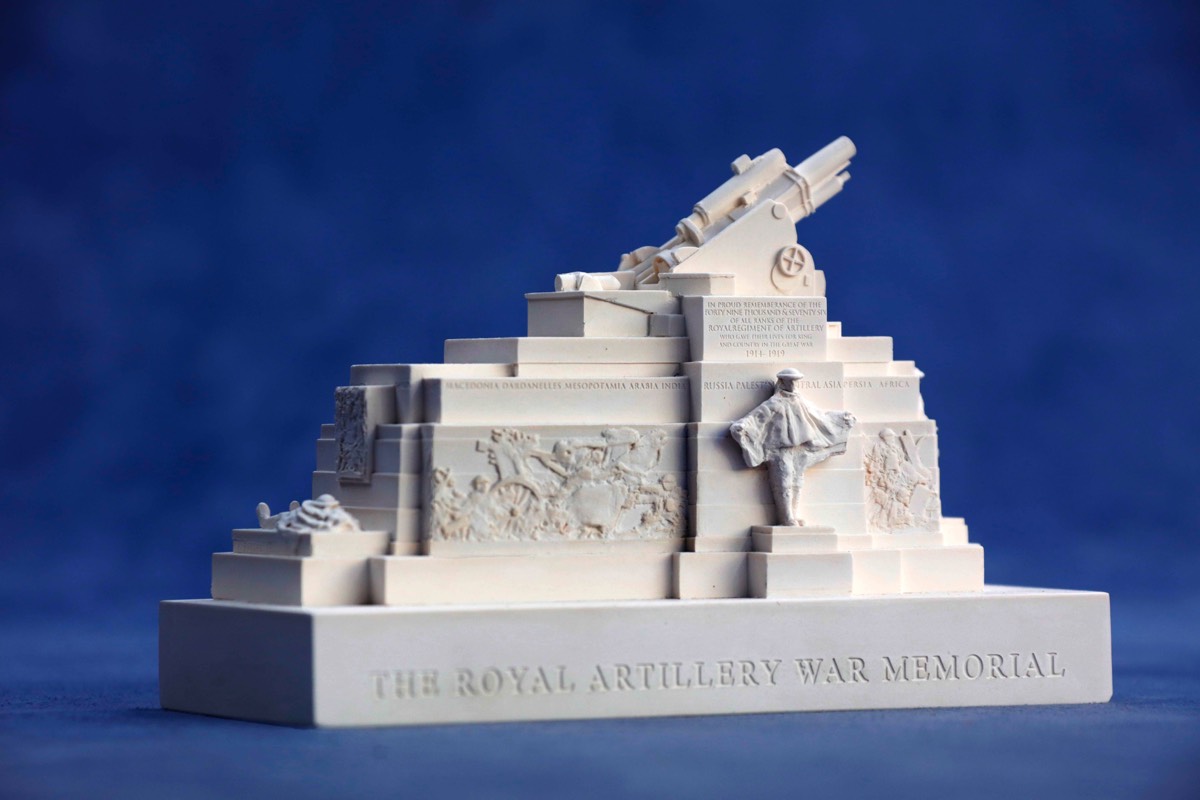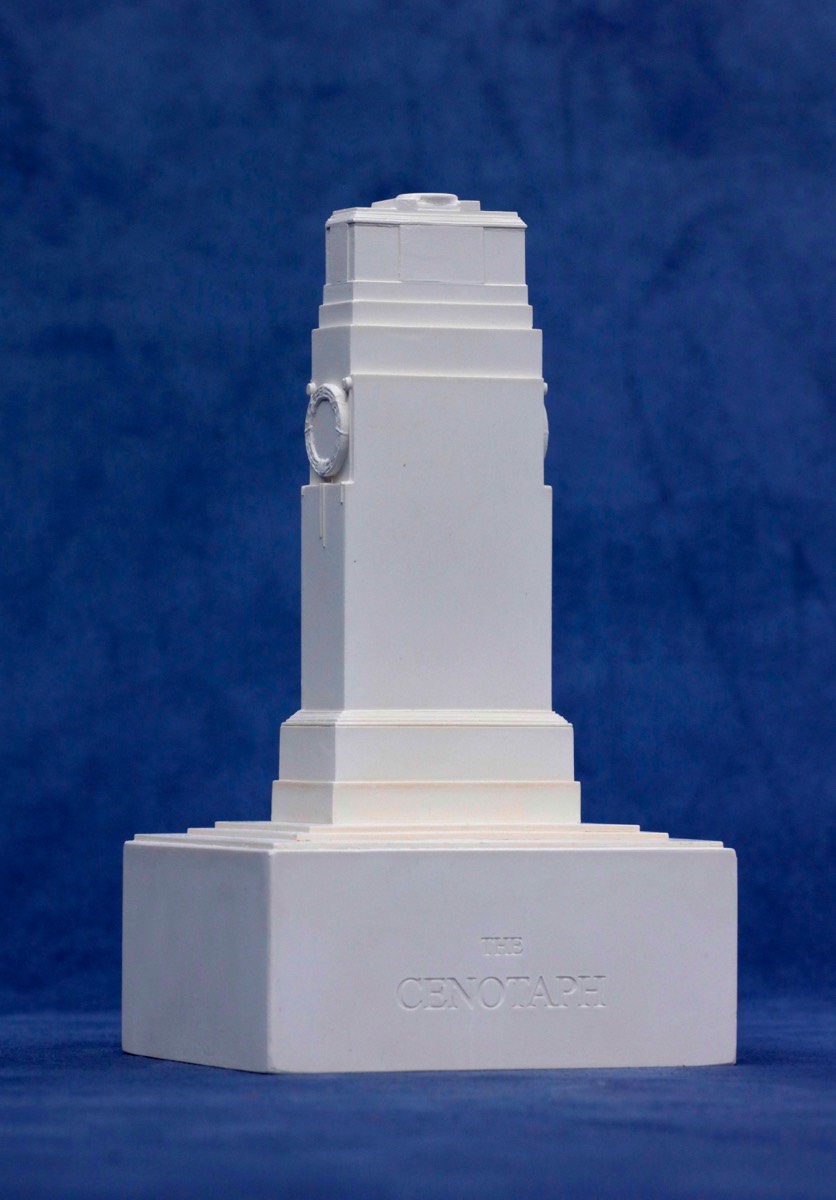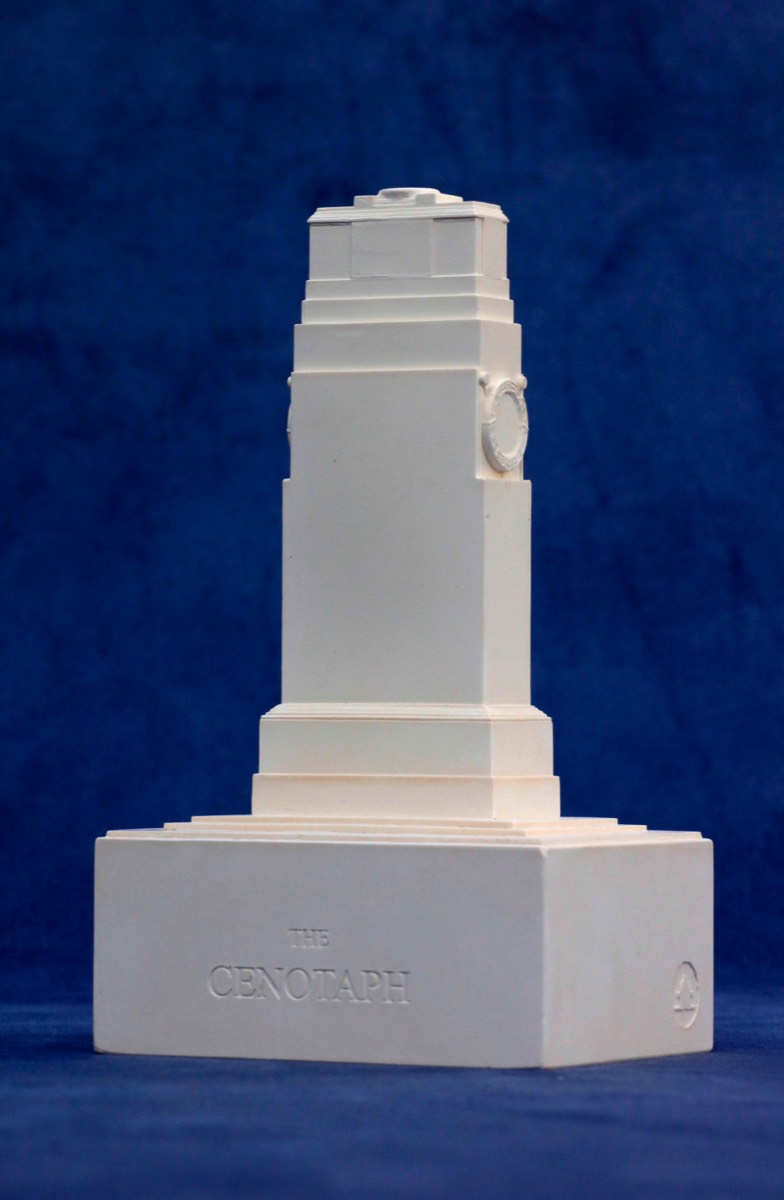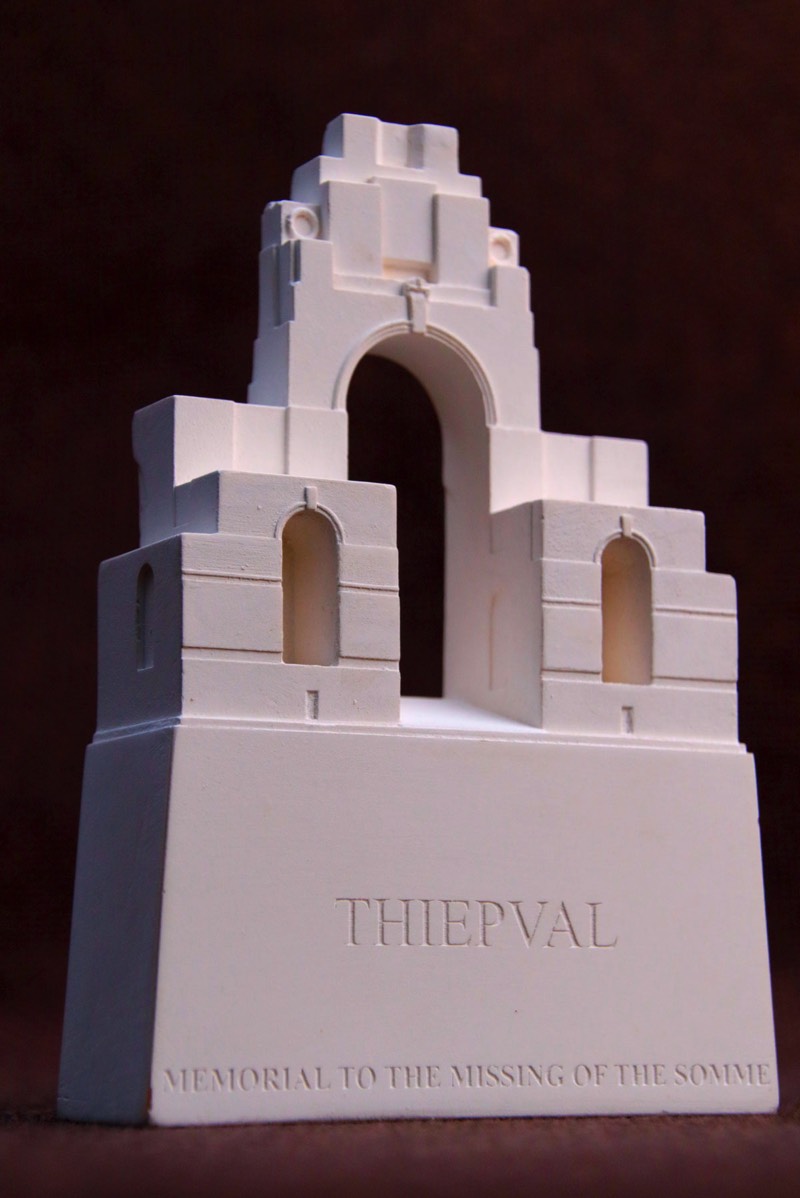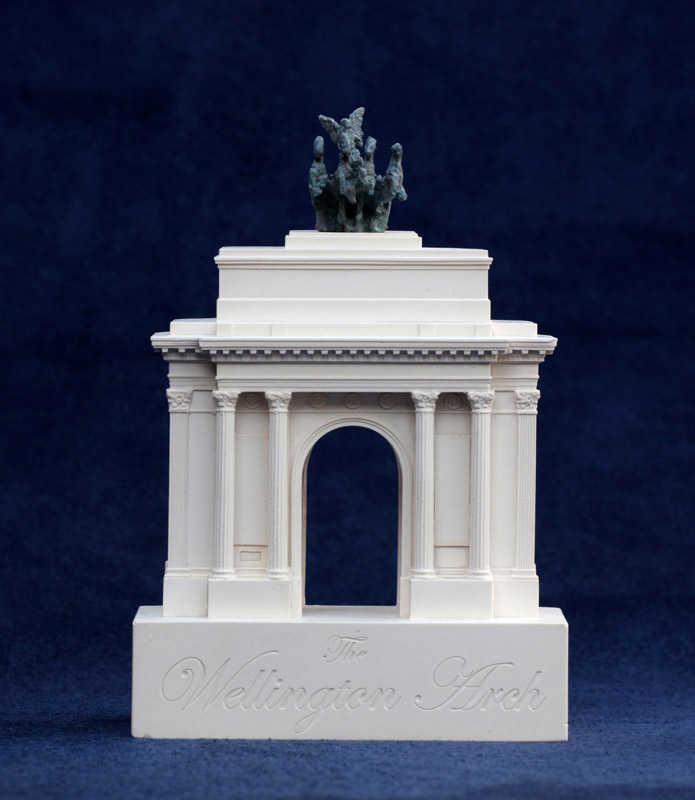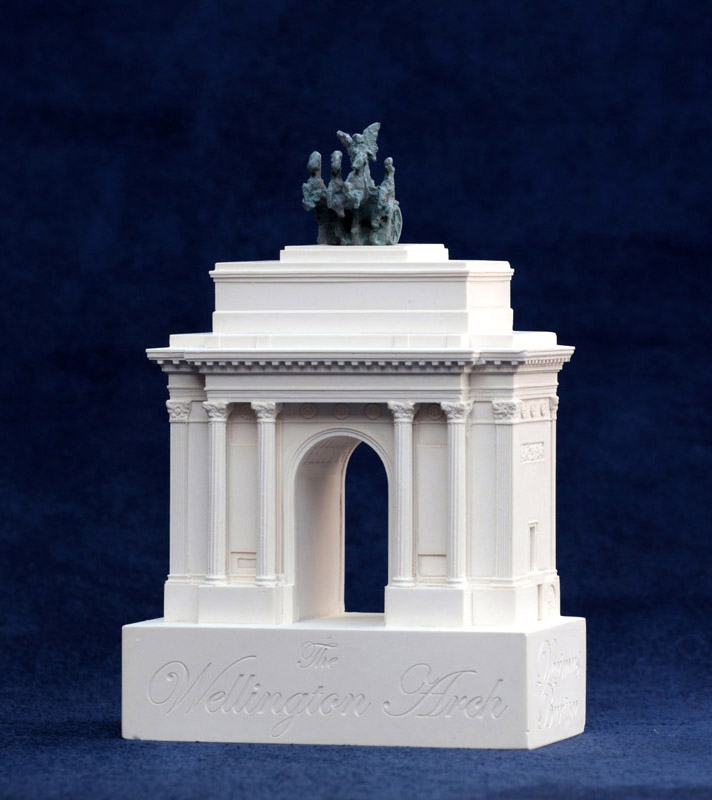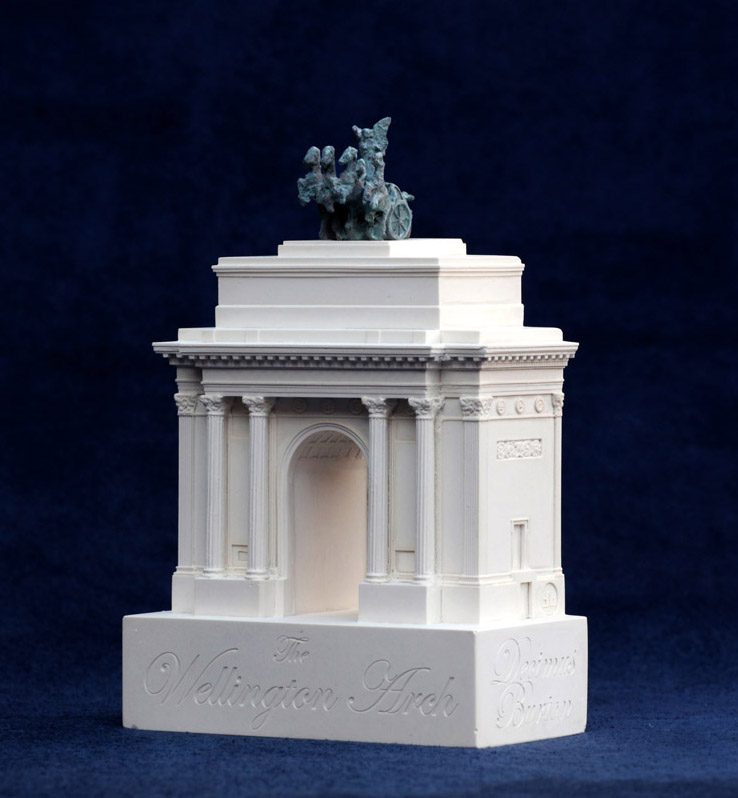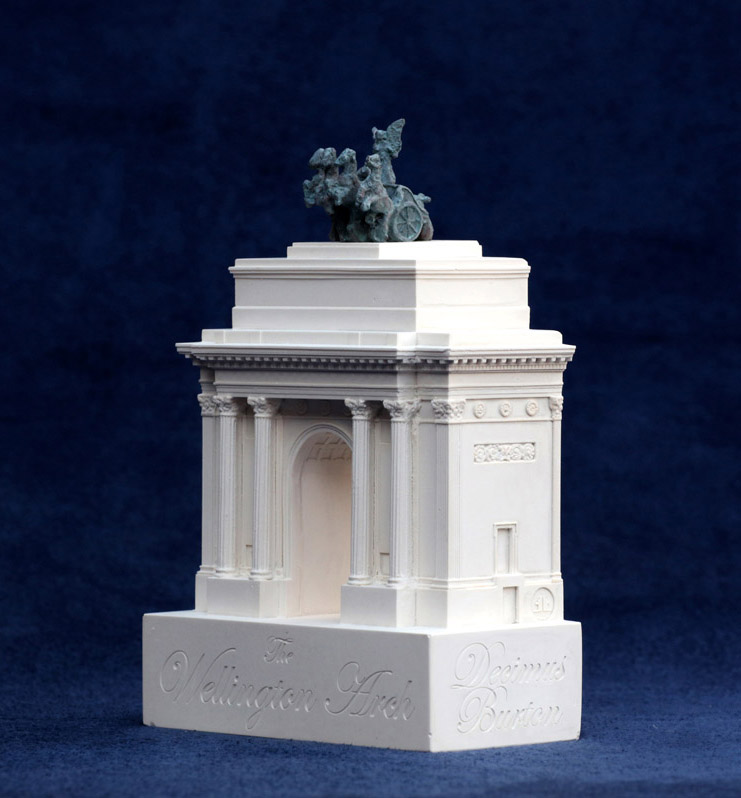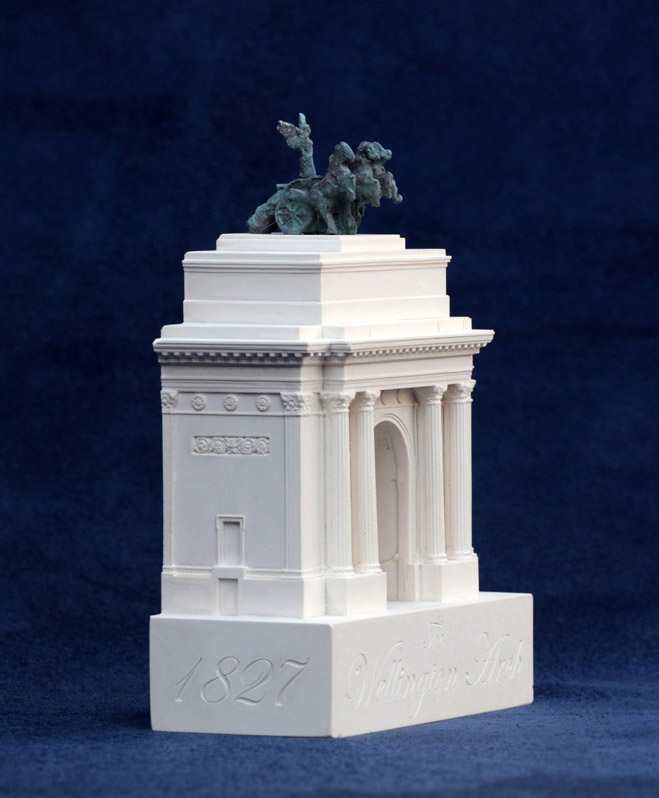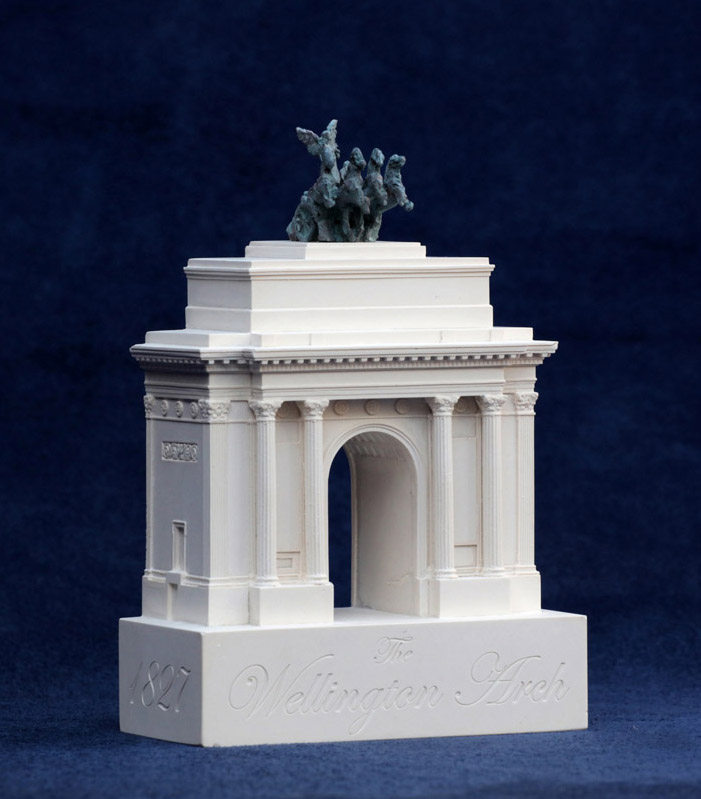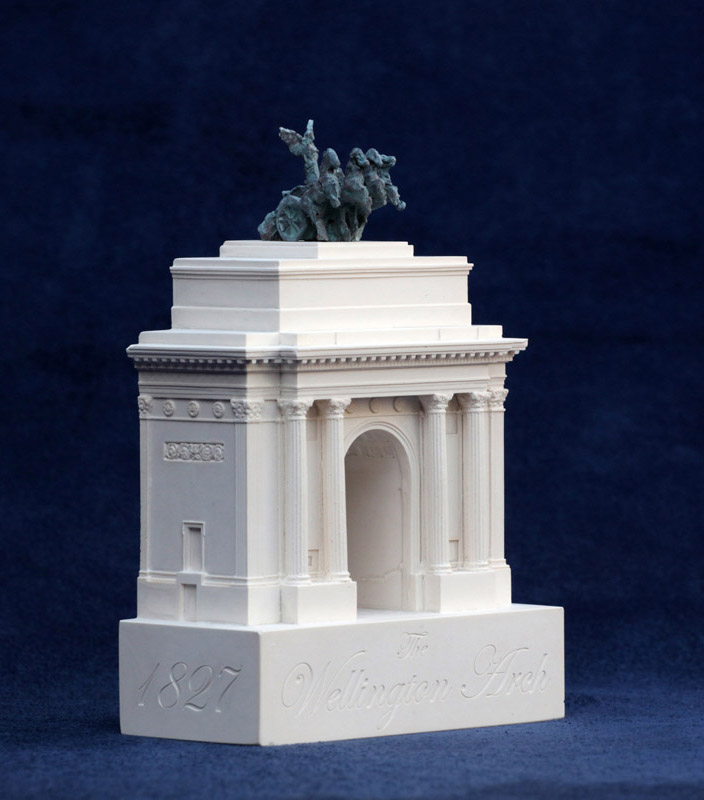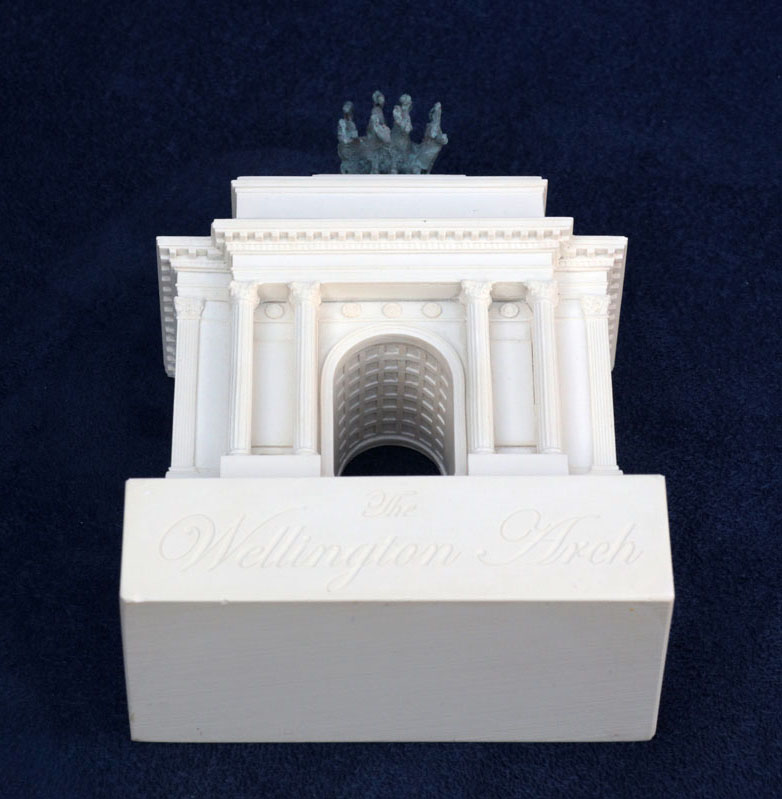
Occassion,
hanging Ornaments
Click on the image to enlarge.
Jane Austen
More Info
Click on the image to enlarge.
Queen Victoria Hanger
More Info
Click on the image to enlarge.
Thiepval Memorial
The memorial commemorates men of British and South African forces who died in the Somme sector. The dead of other Commonwealth countries, who died on the Somme and have no known graves, are commemorated on national memorials elsewhere.
The memorial commemorates men of British and South African forces who died in the Somme sector. The dead of other Commonwealth countries, who died on the Somme and have no known graves, are commemorated on national memorials elsewhere.
More Info
Designed by Sir Edwin Lutyens, the memorial was built between 1928 and 1932 and is the largest Commonwealth Memorial to the Missing in the world. It was inaugurated by the Prince of Wales(later King Edward VIII) in the presence of Albert Lebrun, President of France, on 1st August 1932. The unveiling ceremony was attended by Lutyens.
The memorial dominates the rural scene and has 16 brick piers, faced with Portland Stone. It was originally built using French bricks fromLille, but was refaced in 1973 with Accrington brick.
The main arch is aligned east to west. The memorial is 140 feet (43 m) high, above the level of its podium, which to the west is 20 feet (6.1 m) above the level of the adjoining cemetery. It has foundations 19 feet (5.8 m) thick, which were required because of extensive wartime tunnelling beneath the structure.
It is a complex form of memorial arch, comprising interlocking arches of four sizes. Each side of the main arch is pierced by a smaller arch, orientated at a right angle to the main arch.
Each side of each of these smaller arches is then pierced by a still smaller arch and so on. The keystone of each smaller arch is at the level of the spring of the larger arch that it pierces; each of these levels is marked by a stone cornice.
This design results in 16 piers, having 64 stone-panelled sides. Only 48 of these are inscribed, as the panels around the outside of the memorial are blank.
Height 12cm
The memorial dominates the rural scene and has 16 brick piers, faced with Portland Stone. It was originally built using French bricks fromLille, but was refaced in 1973 with Accrington brick.
The main arch is aligned east to west. The memorial is 140 feet (43 m) high, above the level of its podium, which to the west is 20 feet (6.1 m) above the level of the adjoining cemetery. It has foundations 19 feet (5.8 m) thick, which were required because of extensive wartime tunnelling beneath the structure.
It is a complex form of memorial arch, comprising interlocking arches of four sizes. Each side of the main arch is pierced by a smaller arch, orientated at a right angle to the main arch.
Each side of each of these smaller arches is then pierced by a still smaller arch and so on. The keystone of each smaller arch is at the level of the spring of the larger arch that it pierces; each of these levels is marked by a stone cornice.
This design results in 16 piers, having 64 stone-panelled sides. Only 48 of these are inscribed, as the panels around the outside of the memorial are blank.
Height 12cm
Click on the image to enlarge.
Wellington Arch
Set in the heart of royal London, Wellington Arch was built as an original entrance to Buckingham Palace, later becoming a victory arch proclaiming Wellington's defeat of Napoleon.
More Info
Crowned by the largest bronze sculpture in Europe, it depicts the Angel of Peace descending on the 'Quadriga' - or four-horsed chariot - of War.
Both the Wellington Arch and Marble Arch, which was originally in front of Buckingham Palace, were planned in 1825 by George IV to commemorate Britain's victories in the Napoleonic Wars.
The Wellington Arch was also conceived as an outer gateway to Constitution Hill and therefore a grand entrance into central London from the west. The presence of a turnpike gate at this point had led, in the 18th century, to a strong perception that this was the beginning of London and the arch was intended to reflect the importance of the position.
Height: 125mm
Width: 85mm
Depth: 42mm
Both the Wellington Arch and Marble Arch, which was originally in front of Buckingham Palace, were planned in 1825 by George IV to commemorate Britain's victories in the Napoleonic Wars.
The Wellington Arch was also conceived as an outer gateway to Constitution Hill and therefore a grand entrance into central London from the west. The presence of a turnpike gate at this point had led, in the 18th century, to a strong perception that this was the beginning of London and the arch was intended to reflect the importance of the position.
Height: 125mm
Width: 85mm
Depth: 42mm
Click on the image to enlarge.
WWI Commemorative Decoration
Limited Edition of 1918 pieces
The Angels of Mons is a popular legend about a group of angels who supposedly protected members of the British Army in the Battle of Mons at the outset of the First World War.
Limited Edition of 1918 pieces
The Angels of Mons is a popular legend about a group of angels who supposedly protected members of the British Army in the Battle of Mons at the outset of the First World War.
More Info
2018 is the Centenary of the First World War.
British soldiers declared they had seen angels during the Battle of Mons - the angels presence provided a source of comfort and hope, guarding the men in the trenches.
This decoration has been designed around the legacy of The Great War,1914 to1918.
Height 8cm
British soldiers declared they had seen angels during the Battle of Mons - the angels presence provided a source of comfort and hope, guarding the men in the trenches.
This decoration has been designed around the legacy of The Great War,1914 to1918.
Height 8cm
Click on the image to enlarge.
Winston Churchill
30.11.1874 - 24.01.1965
Churchill was the Prime Minister of the United Kingdom from 1940 to 1945 and again from 1951 to 1955.
More Info
Churchill was also an officer in the British Army, a non-academic historian, a writer and an artist.
He won the Nobel Prize for Literature in 1953 for his lifetime body of work. In 1963, he was the first of only eight people to be made an honorary citizen of the United States. In his Speech to the House of Commons, May 13th 1940 he uttered the immortal words - "...we shall defend our Island, whatever the cost may be...we shall never surrender."
The Bust
Churchill is one of the most photographed, sculpted, painted and drawn figures in modern history. This original sculpture drew on this history and was made at our workshop in Bath.
Around the Base
For this bust we have included objects around the base of things reminiscent of World War II including a gas mask, military hat, a soldiers helmet, Spitfire, Churchill's bowler hat, a Hurricane and a trowel.
The etch around the base reads:
"WE SHALL NEVER SURRENDER"
Height: 120mm
Width: 70mm
Depth: 35mm
He won the Nobel Prize for Literature in 1953 for his lifetime body of work. In 1963, he was the first of only eight people to be made an honorary citizen of the United States. In his Speech to the House of Commons, May 13th 1940 he uttered the immortal words - "...we shall defend our Island, whatever the cost may be...we shall never surrender."
The Bust
Churchill is one of the most photographed, sculpted, painted and drawn figures in modern history. This original sculpture drew on this history and was made at our workshop in Bath.
Around the Base
For this bust we have included objects around the base of things reminiscent of World War II including a gas mask, military hat, a soldiers helmet, Spitfire, Churchill's bowler hat, a Hurricane and a trowel.
The etch around the base reads:
"WE SHALL NEVER SURRENDER"
Height: 120mm
Width: 70mm
Depth: 35mm
Click on the image to enlarge.
Churchill Bookend (Single)
Sir Winston Leonard Spencer-Churchill (30 November 1874 – 24 January 1965) was a British politician, army officer, and writer, who was Prime Minister of the United Kingdom from 1940 to 1945 and again from 1951 to 1955.
Sir Winston Leonard Spencer-Churchill (30 November 1874 – 24 January 1965) was a British politician, army officer, and writer, who was Prime Minister of the United Kingdom from 1940 to 1945 and again from 1951 to 1955.
More Info
He won the Nobel Prize for Literature in 1953 for his lifetime body of work.
In 1963, he was the first of only eight people to be made an honorary citizen of the United States.
In his Speech to the House of Commons may 13th 1940 he uttered the immortal words - "...we shall defend our Island, whatever the cost may be...we shall never surrender."
Churchill is on of the most photographed, sculpted, painted and drawn figures in modern history. This original sculpture drew on this history and was made at our workshop in Bath.
As Prime Minister, Churchill led Britain to victory in the in the Second World War. Churchill represented five constituencies during his career as Member of Parliament (MP).
Ideologically an Economic Liberal and British Imperialist, he began and ended his parliamentary career as a member of the Conservative Party, which he led from 1940 to 1955, but for twenty years from 1904 he was a prominent member of the Liberal Party.
This bookend is inscribed on one side with Winston Churchill's signature.
The other features the great Briton’s 'We shall never surrender speech,' made to the House of Commons June 1940.
Height 17cm
In 1963, he was the first of only eight people to be made an honorary citizen of the United States.
In his Speech to the House of Commons may 13th 1940 he uttered the immortal words - "...we shall defend our Island, whatever the cost may be...we shall never surrender."
Churchill is on of the most photographed, sculpted, painted and drawn figures in modern history. This original sculpture drew on this history and was made at our workshop in Bath.
As Prime Minister, Churchill led Britain to victory in the in the Second World War. Churchill represented five constituencies during his career as Member of Parliament (MP).
Ideologically an Economic Liberal and British Imperialist, he began and ended his parliamentary career as a member of the Conservative Party, which he led from 1940 to 1955, but for twenty years from 1904 he was a prominent member of the Liberal Party.
This bookend is inscribed on one side with Winston Churchill's signature.
The other features the great Briton’s 'We shall never surrender speech,' made to the House of Commons June 1940.
Height 17cm
Click on the image to enlarge.
Churchill Bookend (set of 2)
Sir Winston Leonard Spencer-Churchill (30 November 1874 – 24 January 1965) was a British politician, army officer, and writer, who was Prime Minister of the United Kingdom from 1940 to 1945 and again from 1951 to 1955.
Sir Winston Leonard Spencer-Churchill (30 November 1874 – 24 January 1965) was a British politician, army officer, and writer, who was Prime Minister of the United Kingdom from 1940 to 1945 and again from 1951 to 1955.
More Info
He won the Nobel Prize for Literature in 1953 for his lifetime body of work.
In 1963, he was the first of only eight people to be made an honorary citizen of the United States.
In his Speech to the House of Commons may 13th 1940 he uttered the immortal words - "...we shall defend our Island, whatever the cost may be...we shall never surrender."
Churchill is on of the most photographed, sculpted, painted and drawn figures in modern history. This original sculpture drew on this history and was made at our workshop in Bath.
As Prime Minister, Churchill led Britain to victory in the in the Second World War. Churchill represented five constituencies during his career as Member of Parliament (MP).
Ideologically an Economic Liberal and British Imperialist, he began and ended his parliamentary career as a member of the Conservative Party, which he led from 1940 to 1955, but for twenty years from 1904 he was a prominent member of the Liberal Party.
This bookend is inscribed on one side with Winston Churchill's signature.
The other features the great Briton’s 'We shall never surrender speech,' made to the House of Commons June 1940.
Height 17cm
In 1963, he was the first of only eight people to be made an honorary citizen of the United States.
In his Speech to the House of Commons may 13th 1940 he uttered the immortal words - "...we shall defend our Island, whatever the cost may be...we shall never surrender."
Churchill is on of the most photographed, sculpted, painted and drawn figures in modern history. This original sculpture drew on this history and was made at our workshop in Bath.
As Prime Minister, Churchill led Britain to victory in the in the Second World War. Churchill represented five constituencies during his career as Member of Parliament (MP).
Ideologically an Economic Liberal and British Imperialist, he began and ended his parliamentary career as a member of the Conservative Party, which he led from 1940 to 1955, but for twenty years from 1904 he was a prominent member of the Liberal Party.
This bookend is inscribed on one side with Winston Churchill's signature.
The other features the great Briton’s 'We shall never surrender speech,' made to the House of Commons June 1940.
Height 17cm
Remembrance
Click on the image to enlarge.
The Royal Artillery War Memorial
More Info
The Royal Artillery Memorial is a stone memorial at Hyde Park Corner in London, dedicated to the First World War casualties of the Royal Regiment of Artillery.
The memorial was designed by Charles Jagger and Lionel Pearson, and features a giant sculpture of a BL 9.2-inch MKI Howitzer upon a large plinth of Portland Stone with stone reliefs depicting scenes from the conflict.
Four bronze figures of artillerymen are positioned around the outside of the memorial. The memorial is famous for its realist contrast with other First World War memorials, such as the Cenotaph designed by Edwin Lutyens, and attracted much public debate during the 20th century.
The memorial was designed by Charles Jagger and Lionel Pearson, and features a giant sculpture of a BL 9.2-inch MKI Howitzer upon a large plinth of Portland Stone with stone reliefs depicting scenes from the conflict.
Four bronze figures of artillerymen are positioned around the outside of the memorial. The memorial is famous for its realist contrast with other First World War memorials, such as the Cenotaph designed by Edwin Lutyens, and attracted much public debate during the 20th century.
Click on the image to enlarge.
The Cenotaph
More Info
This monument was designed in 1919 by Edwin Lutyens.
It became the official war memorial of the UK after replacing the original wood and plaster structure erected for the London Victory Parade, marking the official end of WWII.
The Remembrance Sunday service is held at the site annually to remember those lost in all wars from WWI onwards.
The Cenotaph is a war memorial on Whitehall in London, England. Its origin is in a temporary structure erected for a peace parade following the end of the First World War, and after an outpouring of national sentiment it was replaced in 1920 by a permanent structure and designated the United Kingdom's official national war memorial.
Designed by Edwin Lutyens, the permanent structure was built from Portland Stone between 1919 and 1920 by Holland, Hannen & Cubitts, replacing Lutyens' earlier wood-and-plaster Cenotaph in the same location. An annual Service of Remembrance is held at the site on Remeberance Sunday , the closest Sunday to 11 November (Armistice Day) each year.
Lutyens' cenotaph design has been reproduced elsewhere in the UK and in other countries of historical British allegiance including Australia, Canada, New Zealand, Bermuda and Hong Kong.
Height 12cm
It became the official war memorial of the UK after replacing the original wood and plaster structure erected for the London Victory Parade, marking the official end of WWII.
The Remembrance Sunday service is held at the site annually to remember those lost in all wars from WWI onwards.
The Cenotaph is a war memorial on Whitehall in London, England. Its origin is in a temporary structure erected for a peace parade following the end of the First World War, and after an outpouring of national sentiment it was replaced in 1920 by a permanent structure and designated the United Kingdom's official national war memorial.
Designed by Edwin Lutyens, the permanent structure was built from Portland Stone between 1919 and 1920 by Holland, Hannen & Cubitts, replacing Lutyens' earlier wood-and-plaster Cenotaph in the same location. An annual Service of Remembrance is held at the site on Remeberance Sunday , the closest Sunday to 11 November (Armistice Day) each year.
Lutyens' cenotaph design has been reproduced elsewhere in the UK and in other countries of historical British allegiance including Australia, Canada, New Zealand, Bermuda and Hong Kong.
Height 12cm
Click on the image to enlarge.
Thiepval Memorial
More Info
The memorial commemorates men of British and South African forces who died in the Somme sector. The dead of other Commonwealth countries, who died on the Somme and have no known graves, are commemorated on national memorials elsewhere.
Designed by Sir Edwin Lutyens, the memorial was built between 1928 and 1932 and is the largest Commonwealth Memorial to the Missing in the world. It was inaugurated by the Prince of Wales(later King Edward VIII) in the presence of Albert Lebrun, President of France, on 1st August 1932. The unveiling ceremony was attended by Lutyens.
The memorial dominates the rural scene and has 16 brick piers, faced with Portland Stone. It was originally built using French bricks fromLille, but was refaced in 1973 with Accrington brick.
The main arch is aligned east to west. The memorial is 140 feet (43 m) high, above the level of its podium, which to the west is 20 feet (6.1 m) above the level of the adjoining cemetery. It has foundations 19 feet (5.8 m) thick, which were required because of extensive wartime tunnelling beneath the structure.
It is a complex form of memorial arch, comprising interlocking arches of four sizes. Each side of the main arch is pierced by a smaller arch, orientated at a right angle to the main arch.
Each side of each of these smaller arches is then pierced by a still smaller arch and so on. The keystone of each smaller arch is at the level of the spring of the larger arch that it pierces; each of these levels is marked by a stone cornice.
This design results in 16 piers, having 64 stone-panelled sides. Only 48 of these are inscribed, as the panels around the outside of the memorial are blank.
Height 12cm
Designed by Sir Edwin Lutyens, the memorial was built between 1928 and 1932 and is the largest Commonwealth Memorial to the Missing in the world. It was inaugurated by the Prince of Wales(later King Edward VIII) in the presence of Albert Lebrun, President of France, on 1st August 1932. The unveiling ceremony was attended by Lutyens.
The memorial dominates the rural scene and has 16 brick piers, faced with Portland Stone. It was originally built using French bricks fromLille, but was refaced in 1973 with Accrington brick.
The main arch is aligned east to west. The memorial is 140 feet (43 m) high, above the level of its podium, which to the west is 20 feet (6.1 m) above the level of the adjoining cemetery. It has foundations 19 feet (5.8 m) thick, which were required because of extensive wartime tunnelling beneath the structure.
It is a complex form of memorial arch, comprising interlocking arches of four sizes. Each side of the main arch is pierced by a smaller arch, orientated at a right angle to the main arch.
Each side of each of these smaller arches is then pierced by a still smaller arch and so on. The keystone of each smaller arch is at the level of the spring of the larger arch that it pierces; each of these levels is marked by a stone cornice.
This design results in 16 piers, having 64 stone-panelled sides. Only 48 of these are inscribed, as the panels around the outside of the memorial are blank.
Height 12cm
Click on the image to enlarge.
Wellington Arch London
More Info
Set in the heart of royal London, Wellington Arch was built as an original entrance to Buckingham Palace, later becoming a victory arch proclaiming Wellington's defeat of Napoleon.
Crowned by the largest bronze sculpture in Europe, it depicts the Angel of Peace descending on the 'Quadriga' - or four-horsed chariot - of War.
Both the Wellington Arch and Marble Arch, which was originally in front of Buckingham Palace, were planned in 1825 by George IV to commemorate Britain's victories in the Napoleonic Wars.
The Wellington Arch was also conceived as an outer gateway to Constitution Hill and therefore a grand entrance into central London from the west. The presence of a turnpike gate at this point had led, in the 18th century, to a strong perception that this was the beginning of London and the arch was intended to reflect the importance of the position.
Height: 125mm
Width: 85mm
Depth: 42mm
Crowned by the largest bronze sculpture in Europe, it depicts the Angel of Peace descending on the 'Quadriga' - or four-horsed chariot - of War.
Both the Wellington Arch and Marble Arch, which was originally in front of Buckingham Palace, were planned in 1825 by George IV to commemorate Britain's victories in the Napoleonic Wars.
The Wellington Arch was also conceived as an outer gateway to Constitution Hill and therefore a grand entrance into central London from the west. The presence of a turnpike gate at this point had led, in the 18th century, to a strong perception that this was the beginning of London and the arch was intended to reflect the importance of the position.
Height: 125mm
Width: 85mm
Depth: 42mm
Click on the image to enlarge.
WWI Commemorative Decoration
More Info
Limited Edition of 1918 pieces
The Angels of Mons is a popular legend about a group of angels who supposedly protected members of the British Army in the Battle of Mons at the outset of the First World War.
2018 is the Centenary of the First World War.
British soldiers declared they had seen angels during the Battle of Mons - the angels presence provided a source of comfort and hope, guarding the men in the trenches.
This decoration has been designed around the legacy of The Great War,1914 to1918.
Height 8cm
The Angels of Mons is a popular legend about a group of angels who supposedly protected members of the British Army in the Battle of Mons at the outset of the First World War.
2018 is the Centenary of the First World War.
British soldiers declared they had seen angels during the Battle of Mons - the angels presence provided a source of comfort and hope, guarding the men in the trenches.
This decoration has been designed around the legacy of The Great War,1914 to1918.
Height 8cm
Click on the image to enlarge.
Winston Churchill
30.11.1874 - 24.01.1965
More Info
Churchill was the Prime Minister of the United Kingdom from 1940 to 1945 and again from 1951 to 1955.
Churchill was also an officer in the British Army, a non-academic historian, a writer and an artist.
He won the Nobel Prize for Literature in 1953 for his lifetime body of work. In 1963, he was the first of only eight people to be made an honorary citizen of the United States. In his Speech to the House of Commons, May 13th 1940 he uttered the immortal words - "...we shall defend our Island, whatever the cost may be...we shall never surrender."
The Bust
Churchill is one of the most photographed, sculpted, painted and drawn figures in modern history. This original sculpture drew on this history and was made at our workshop in Bath.
Around the Base
For this bust we have included objects around the base of things reminiscent of World War II including a gas mask, military hat, a soldiers helmet, Spitfire, Churchill's bowler hat, a Hurricane and a trowel.
The etch around the base reads:
"WE SHALL NEVER SURRENDER"
Height: 120mm
Width: 70mm
Depth: 35mm
Churchill was also an officer in the British Army, a non-academic historian, a writer and an artist.
He won the Nobel Prize for Literature in 1953 for his lifetime body of work. In 1963, he was the first of only eight people to be made an honorary citizen of the United States. In his Speech to the House of Commons, May 13th 1940 he uttered the immortal words - "...we shall defend our Island, whatever the cost may be...we shall never surrender."
The Bust
Churchill is one of the most photographed, sculpted, painted and drawn figures in modern history. This original sculpture drew on this history and was made at our workshop in Bath.
Around the Base
For this bust we have included objects around the base of things reminiscent of World War II including a gas mask, military hat, a soldiers helmet, Spitfire, Churchill's bowler hat, a Hurricane and a trowel.
The etch around the base reads:
"WE SHALL NEVER SURRENDER"
Height: 120mm
Width: 70mm
Depth: 35mm
Click on the image to enlarge.
Churchill Bookend (Single)
More Info
Sir Winston Leonard Spencer-Churchill (30 November 1874 – 24 January 1965) was a British politician, army officer, and writer, who was Prime Minister of the United Kingdom from 1940 to 1945 and again from 1951 to 1955.
He won the Nobel Prize for Literature in 1953 for his lifetime body of work.
In 1963, he was the first of only eight people to be made an honorary citizen of the United States.
In his Speech to the House of Commons may 13th 1940 he uttered the immortal words - "...we shall defend our Island, whatever the cost may be...we shall never surrender."
Churchill is on of the most photographed, sculpted, painted and drawn figures in modern history. This original sculpture drew on this history and was made at our workshop in Bath.
As Prime Minister, Churchill led Britain to victory in the in the Second World War. Churchill represented five constituencies during his career as Member of Parliament (MP).
Ideologically an Economic Liberal and British Imperialist, he began and ended his parliamentary career as a member of the Conservative Party, which he led from 1940 to 1955, but for twenty years from 1904 he was a prominent member of the Liberal Party.
This bookend is inscribed on one side with Winston Churchill's signature.
The other features the great Briton’s 'We shall never surrender speech,' made to the House of Commons June 1940.
Height 17cm
He won the Nobel Prize for Literature in 1953 for his lifetime body of work.
In 1963, he was the first of only eight people to be made an honorary citizen of the United States.
In his Speech to the House of Commons may 13th 1940 he uttered the immortal words - "...we shall defend our Island, whatever the cost may be...we shall never surrender."
Churchill is on of the most photographed, sculpted, painted and drawn figures in modern history. This original sculpture drew on this history and was made at our workshop in Bath.
As Prime Minister, Churchill led Britain to victory in the in the Second World War. Churchill represented five constituencies during his career as Member of Parliament (MP).
Ideologically an Economic Liberal and British Imperialist, he began and ended his parliamentary career as a member of the Conservative Party, which he led from 1940 to 1955, but for twenty years from 1904 he was a prominent member of the Liberal Party.
This bookend is inscribed on one side with Winston Churchill's signature.
The other features the great Briton’s 'We shall never surrender speech,' made to the House of Commons June 1940.
Height 17cm
Click on the image to enlarge.
Churchill Bookend (set of 2)
More Info
Sir Winston Leonard Spencer-Churchill (30 November 1874 – 24 January 1965) was a British politician, army officer, and writer, who was Prime Minister of the United Kingdom from 1940 to 1945 and again from 1951 to 1955.
He won the Nobel Prize for Literature in 1953 for his lifetime body of work.
In 1963, he was the first of only eight people to be made an honorary citizen of the United States.
In his Speech to the House of Commons may 13th 1940 he uttered the immortal words - "...we shall defend our Island, whatever the cost may be...we shall never surrender."
Churchill is on of the most photographed, sculpted, painted and drawn figures in modern history. This original sculpture drew on this history and was made at our workshop in Bath.
As Prime Minister, Churchill led Britain to victory in the in the Second World War. Churchill represented five constituencies during his career as Member of Parliament (MP).
Ideologically an Economic Liberal and British Imperialist, he began and ended his parliamentary career as a member of the Conservative Party, which he led from 1940 to 1955, but for twenty years from 1904 he was a prominent member of the Liberal Party.
This bookend is inscribed on one side with Winston Churchill's signature.
The other features the great Briton’s 'We shall never surrender speech,' made to the House of Commons June 1940.
Height 17cm
He won the Nobel Prize for Literature in 1953 for his lifetime body of work.
In 1963, he was the first of only eight people to be made an honorary citizen of the United States.
In his Speech to the House of Commons may 13th 1940 he uttered the immortal words - "...we shall defend our Island, whatever the cost may be...we shall never surrender."
Churchill is on of the most photographed, sculpted, painted and drawn figures in modern history. This original sculpture drew on this history and was made at our workshop in Bath.
As Prime Minister, Churchill led Britain to victory in the in the Second World War. Churchill represented five constituencies during his career as Member of Parliament (MP).
Ideologically an Economic Liberal and British Imperialist, he began and ended his parliamentary career as a member of the Conservative Party, which he led from 1940 to 1955, but for twenty years from 1904 he was a prominent member of the Liberal Party.
This bookend is inscribed on one side with Winston Churchill's signature.
The other features the great Briton’s 'We shall never surrender speech,' made to the House of Commons June 1940.
Height 17cm
